Floyd Rose Tremolos for Left Hand Guitars: Proprietary versions
- Gaskell Guitars Australia

- Aug 7
- 53 min read
Updated: 13 minutes ago
The following is the ultimate guide on left handed Floyd Rose® tremolos: genuine, licensed, and proprietary - past and present. Nowhere else on the internet will you find all this information in one place.
This article is in five parts:
Part 1: Original and Genuine Floyd Rose (Floyd Rose, Fernandes, Schaller, Sung il, Ping Well)
Part 2: OEM Producers (Kahler, Gotoh, Takeuchi, Ping Well, Jin Ah)
Part 3: Proprietary Versions (Schaller, Kahler, Fernandes, Ibanez, St. Louis Music, Aria Pro II, Yamaha, ESP, Jackson-Charvel, Kaman Music Corporation)
Part 4: The Asian OEM Pool ("Korean Catalog", "Chinese Catalog")
Part 5: No-Names, Fakes, Unknowns, and Never Left Handed
Schaller
Schaller Licensed Tremolo
(1984–2012)
Status: Discontinued
In addition to producing the Original Floyd Rose (OFR) tremolo for Floyd Rose, Schaller produced their own proprietary licensed tremolo as an aftermarket alternative to the OFR. The Schaller Licensed Tremolo (SLT) was advertised and sold by Schaller directly to the public. All parts between the SLT and the OFR are interchangeable. Although the two appear identical, there are some very minor manufacturing differences between them:
The baseplate of the SLT is zinc cast, as opposed to being solid steel on the OFR.
The fulcrum points on the SLT have replaceable hardened steel inserts.
The locking screws on the SLT aren't as long in the back, thus allowing the unit to fit in a smaller rout.
The SLT features a 12" radius, as opposed to the 10" of the OFR.
Trembucker or F-spaced humbuckers are not necessary for the SLT.
The Schaller Licensed Tremolo has "Schaller" embossed on one side of the baseplate and "Made in Germany by Schaller" embossed on the other. The block is stamped with U.S. patent numbers 4,549,461 and 4,497,236, along with the block size.
Several guitar brands opted for the Schaller Licensed Tremolo as standard on some of their production guitars at different times, such as Jackson, B.C. Rich, Charvel, Fender, Squier, Hamer, Washburn, and Fernandes.
Examples of left-handed guitars that came standard with the Schaller Licensed Tremolo include the 1996/1997 Japan-only Grover Jackson RR/L.D-144 and Grover Jackson SL/L.D-138, this 1995 USA-made lefty Hamer Diablo, and this USA-made 1989 lefty Charvel Deluxe 475. The Hisashi Imai "Stabilizer" Signature model by Fernandes came with the Schaller Licensed tremolo but was only available left-handed in 2003. The 2005 Japan-only Jackson Stars Series included four lefty models with the Schaller Licensed tremolo: the SL-J2L, RR-J2L, DK-03L, and RR-03L.
Schaller phased out left handed units beginning in 2012.
LockMeister 6
(2012– present)
Status: Current
The Schaller LockMeister® 6 Tremolo is a further development of Schaller's licensed proprietary tremolo system "using newer technologies." It is made in Germany. All studs, inserts and screws are black-zinc and black-chrome finished. It has height-adjustable, one-piece string saddles for 12" tremolo-radius, eliminating the need for shims. The fine tuner screws also have longer threads. It had "Schaller" engraved on the baseplate and the block size stamped into the block. The tremolo was updated in 2023 to allow different radii. Also with the update, the baseplate inscription changed to "LOCKMEISTER." Longer fine tuners have been added in 2025.
The LockMeister is also a direct replacement for the Original Floyd Rose. Left hand models are available in chrome, Satin chrome, black, gold, nickel, and ruthenium.
I am not aware of any guitar brands that use this for their model ranges. This type of tremolo is aimed at Custom builders, such as Gaskell Guitars (myself), and for individuals that want to change an existing guitar.
Kahler
In 1981 Gary Kahler of American Precision Metal Works released a guitar bridge system that would later become the famous Kahler cam-based tremolo system. Besides his own system, Kahler developed three double locking, fulcrum tremolo systems, including the Kahler Steeler which was Kahler's licensed Original Floyd Rose tremolo, and the Kahler Killer and Kahler Spyder which were proprietary systems that incorporated both Floyd Rose and Kahler technologies.
Kahler did not have any competitor other than Floyd Rose during the 1980s but legal challenges, combined with aggressive market positioning by Floyd Rose pushed Kahler out of the business in the 1990s.
The Steeler, Killer, and Spyder were collectively called the 2700 Series. All Kahler tremolos were available in left-hand, though some models were limited to custom orders or specific brand partnerships. (The Kahler Steeler is covered in Part One: Floyd Rose Tremolos for Lefties: OEM Producers)
2710 Killer
(1985–1992)
Status: Discontinued
The Kahler 2710 Killer was a further development of the Floyd Rose double-locking design and Kahler's licensed Steeler. Like all Kahler systems, it was made in the USA.
The Killer incorporated finger-locking saddles, which eliminated the need to cut off the ball ends of the strings and the need to lock the saddles with tools. This unit had more advanced intonation adjustability than an Original Floyd Rose, and string spacing could be adjusted.
Carvin Guitars, a prolific user of Kahler tremolos throughout the 1980s, adopted the Killer in 1989 before switching to Floyd Rose systems from 1990. The Killer came standard on Westone's highest-spec guitars from 1989.
In 2024 Gary Kahler stated this tremolo would never be reintroduced as it was too expensive to produce.
2720 Spyder
(1988–1992, 2024– present)
Status: Discontinued 1992, Reintroduced 2024
The original 2720 Spyder tremolo from the 1980s utilized Kahler patents but was still visually similar to an Original Floyd Rose. There were three versions: the 2722 (Wrench-locking model), the 2731 (Finger-locking model), and the 2750 (Non-locking model.)
Unlike a Floyd Rose, its base used replaceable slotted inserts that pivot on the studs. The studs could be rotated instead of having to be replaced, unlike a tremolo bridge with knife-edges. Unique to Kahler was the Kahler Auto Latch which was an optional fitting to the block that allows one to switch the tremolo from floating to fixed via the tremolo arm. The Spyder will not fit in a Floyd Rose rout.
The Spyder was primarily developed for Fender's HM Series Superstrats built between 1988 and 1992. Peavey and B.C Rich were also prominent users. Peavey and B.C Rich made left handed guitars, Fender did not.
Left-hand guitars were produced with this tremolo, but the left-hand units were simply upside-down right-hand units with a new hole drilled into the opposite side of the baseplate to accommodate the lefty tremolo arm. Although this was visually jarring and cosmetically unappealing, functionality was not affected.
The 1988–1991 lefty Peavey Tracer came standard with the Spyder tremolo. More examples include this 1987 USA Custom Shop lefty Warlock, this 1987 USA Custom Shop lefty B.C Rich ST-III, and this left-handed B.C Rich ST-III from the same era.
Update 2024. After an absence of 32 years Gary Kahler re-released the Spyder as part of his new 2700 Series fulcrum tremolos. The Spyders are being assembled from new old stock parts and will be sold until all are gone. The Kahler Auto Latch is offered again on the Spyder.
Steeler Traditional / Steeler Professional
(2024– present)
Status: Current
In 2024, Gary Kahler announced a return to producing fulcrum-based guitar tremolos after an absence of 32 years. Kahler's earlier licensed Floyd Rose tremolo, the Steeler, was often sold as an OEM licensed tremolo in the 1980s and early 1990s and was highly acclaimed by guitar players and guitar builders. Many a comment was made during that time that the Kahler Floyd Rose was better than the Floyd Floyd Rose.
The Steeler has been re-released in 2024 as two distinct models: the Steeler Traditional and the Steeler Professional. Both feature significant engineering upgrades and are now fully proprietary products. They are marketed as the 2700 Series Fulcrum Tremolo System.
October 2025: I have been in touch with Kahler in the United States and I have just received a left-handed Steeler Traditional, which I will review once I install it in a guitar. It will not fit into a Floyd Rose cavity, so I need to repurpose something I have lying around or build something new.
Two initial comments ahead of a proper review: I am really disappointed that the base is still just a right-handed base with a hole drilled into the other side, just like they did it in the 1980s. Secondly, this is a very expensive product. At over AU$800 for the basic version, this bridge is $300 more expensive than a lefty Original Floyd Rose. The one I received has surface rust along the leading edge of the base and tail bar and some pretty bad tarnishing along the base of the tail. I've never seen that on a Floyd or even an aftermarket Floyd! It's a solid unit, but until I’ve had the chance to install and test it in a guitar, I’m not convinced the added cost and shoddy workmanship(?) is really worth it.
The Steeler Traditional is the most like the classic Floyd Rose design with modifications that include easier saddle intonation, adjustable tremolo arm height and arm clutch, thumb blocks to help keep the strings centred on their saddles, and domed tuners.
With the Steeler Professional you don't have to cut the ball ends off the strings, yet it is still double-locking. The Steeler Pro is a robust string-thru system.
Both can be used with the Kahler Auto-Latch.
There are four block options, two of which are solid brass and designed to be convertible from 32mm, 37mm, and 42mm with the use of special Brass Stacker Plates that come with every block. They will fit both versions.
Fernandes 1981–1985 (Floyd Rose contract period)
Fernandes Electric Sound Research Group Co. Ltd. of Japan was the original contracted supplier of genuine Floyd Rose tremolos, including the prototypes and first production models.
Fernandes was primarily a design, marketing, and distribution company, not a manufacturer themselves. From 1969 they began marketing Fender-style guitars under the "Fernandes" brand and Gibson-style guitars under the "Burny" brand. They relied on a network of contracted manufacturers and factories to build their products. Gotoh was their primary supplier of metal parts. Over time Fernandes expanded beyond guitars and began marketing electronics, replacement parts and accessories.
NOTE: With the exception of the 1983 catalog, Fernandes catalogs never pictured left-handed models.
FRT-2 / Head Banker
Status: Discontinued
In 1981, Floyd Rose contracted Fernandes to mass-produce his double-locking tremolo system. The first model was designated FRT-1. Using Gotoh to manufacture parts and complete units, Fernandes supplied the FRT-1 to Rose in the United States. At the same time, Fernandes developed its own version of it as the FRT-2, which appeared alongside the FRT-1 in the 1982 Fernandes catalog.
Unlike the FRT-1, it does not have insert blocks or locking saddles. It is a string-through bridge where the strings are fed from the bottom through the block and do not need the ball ends cut off.
This bridge was not marketed outside of Japan. While the FRT-1 was explicitly stated in the catalog as being "available right-handed and left-handed," the FRT-2 was not. Despite both being advertised, only the FRT-1 was offered on Fernandes guitars for 1982.
Left handed availability for 1982
Fernandes did periodically produce left-handed guitars in limited runs. A general disclaimer was noted on Page 19 in Volume 2 of the 1982 catalog but didn't state exactly which models from the Fernandes and Burny ranges were orderable. It stated:
③ サウスポーギター
左用は常時作成していませんので機種によっては在庫のない場合があります。新たにオーダーする場合は、約3ヶ月~4ヶ月の納期が基本となっています。価格は本体価格の20%アップとなっています。
(注)左用の場合は、パーツの関係上標準仕様のパーツとは異なる場合もありますので、あらかじめご了承ください。 | ③ Left‑hand Guitars
Left-handed models are not produced continuously, so depending on the model, there may be no stock. If you place a new order, the standard delivery time is approximately 3 to 4 months. The price is 20% higher than the base price.
Note: For left-handed models, due to parts availability, the parts may differ from the standard specification. Thank you for your understanding. |
From 1983, the FRT-2 was advertised in Fernandes catalogs as the "Fernandes Tremolo System Head Banker."
Fernandes catalogs state that the Head Banker featured on the following guitars:
1982: None.
1983: FST-95, FST-80, FST-75, FST-90H, and FST-50 superstrat range, and EX-95 Explorer.
1984: FST-65 and FST-95 superstrats, BSV-70 Flying V, and EX-85 Explorer.
1985: BSV-60 Flying V, and the BX-60 and EXP-60 Explorer models.
Left handed availability for 1983
An ordering disclaimer on Page 38 in Volume 1 of the 1983 Fernandes-Burny catalog established that specifically marked models from the regular lineup could be custom-ordered left-handed. It stated:
サウスポーギター
左用は常時生産していませんので、店舗によっては在庫がない場合があります。また、左用にオーダーする場合は、約3ヶ月〜4ヶ月の納期が基本となっています。価格は本体価格の20%アップとなっています。
(注)左用の場合は、パーツの関係上、掲載している画像のパーツとは異なる場合もありますので、あらかじめご了承ください。
また、左用のギターは右用の納期よりも時間がかかる場合がありますので、あらかじめご了承ください。 納期はオーダーしてから約3ヶ月〜5ヶ月になります。
一部のものはオーダーできません。
※部のものはオーダーできますが、特注となり、納期は4〜5ヶ月が基本となります。定価の20%アップで承ります。 | About Left-handed guitars
Left-handed models are not produced continuously, so some stores may not have them in stock. If you place an order for a left-handed model, the standard delivery time is approximately 3 to 4 months. The price is 20% higher than the base price.
Note: For left-handed models, due to parts availability, the parts used may differ from those shown in the catalog images. Thank you for your understanding.
Additionally, left-handed guitars take longer to manufacture than right-handed guitars, and in some cases, the lead time might extend to 3–5 months.
Items marked with 一 cannot be ordered.
Items marked with ※ can be custom-ordered, in which case the standard delivery time is 4–5 months. Orders are accepted at 20% above the list price. |
|---|
A total of five Burny models and two Fernandes models were marked in the table as eligible for left-handed custom-ordering, but none listed featured Floyd Rose systems or Fernandes' own Head Banker.
Left handed availability for 1984
For 1984, the same ordering procedure applied as the previous year, and the product list on page 46 of the 1984 Fernandes-Burny catalog listed 10 models between the two brands that were eligible for left-hand ordering, three of which featured Floyd Rose or Head Banker tremolos. These were the FST-85 and FST-80 (both with Floyd Rose FRT-3), and the FST-65 (with Fernandes Head Banker FRT-2).
An example of a non-listed, special-ordered left-handed guitar is this 1984 left handed Fernandes EX-85L with Head Banker FRT-2.
Head Crasher FRT-6
Status: Discontinued
In 1985, Fernandes introduced its second in-house design: the Head Crasher FRT-6. This was a single locking tremolo bridge with fine tuners in which the ball ends of the strings do not need to be cut off. Instead, it has horizontal tubes that screw into the saddle assemblies. The strings are fed through the tubes and out and over the saddles. The ends of the tubes are flared to seat the ball ends of the strings and are slotted to take a flat-head screwdriver. The forward part of the saddle assembly was stepped. It had "Head Crasher" etched into the baseplate and no licensing inscriptions.
The Head Crasher was introduced in the 1985 Fernandes-Burny catalog alongside the Japanese FRT-7, which was Fernandes' version of the Floyd Rose final “whale tail” design. that Schaller had been independently manufacturing for Kramer and Rose since late 1983 and for which Fernandes had no domestic equivalent during 1984.
The Head Crasher and FRT-7 share the same baseplate shape and swept-back tail. Both also feature oval arches between where the forks meet the top of the tail, in contrast to the square arches found on the Schaller.
Coincidentally, the Head Crasher is the same concept as the single-locking Floyd Rose II but predates its release by almost two years.
The Head Crasher was available only in Japan and featured in the 1985 Fernandes catalog on the FST-65, FST-135, and FST-125 superstrats, and the BSV-70 Flying V and BX-70 Explorer. It was also used on the 1985 Burny RSC-100 (Les Paul replica.) It was also used by ESP on their Japan-only Kramer Japan JK Series introduced in 1985.
1985 Left-handed availability
The 1985 catalog introduced a modified ordering system by way of symbols for each order category: ● for regular production models, ▲ for non-stock, special orders (at a higher price), and × for models that could not be ordered.
Production models listed were the FST-65 (with Fernandes Head Crasher FRT-6) and BSV-60 (with Fernandes Head Banker FRT-2.)
Additional models available by special order were the FST-75 (with Floyd Rose FRT-3), FST-85 (with Japanese Floyd Rose FRT-7), FST-90 (with Japanese Floyd Rose FRT-7), BSV-90 (with Japanese Floyd Rose FRT-7), and BSV-70 (with Fernandes Head Crasher FRT-6.)
Left-handed examples include this red left-handed 1985 FST-65L, this white left-handed 1985 FST-65L, this black 1985 FST-65L (which I now own), and this white 1985 FST-65L (erroneously stated as a 1988 model), each with the Fernandes Head Crasher FRT-6.
Fernandes "Head Crasher Tremolo System" 1986–1987
Fernandes' contract with Floyd Rose ended sometime in 1985, by which time Kramer had already dominated the U.S. market with its exclusive rights to use Floyd Rose systems on their guitars. Fernandes immediately took the name of their Head Crasher FRT6 tremolo and rebranded their entire range to "Head Crasher Tremolo System". Thereafter, they produced licensed Floyd Rose units and developed proprietary tremolos for their own range of guitars.
1985 marked Fernandes’ final year of production of the genuine Floyd Rose non‑fine‑tuner FRT‑3 unit and their own Head Banker FRT‑2 tremolo.
The new Head Crasher range debuted in the 1986 Fernandes catalog.
New FRT-9 and new FRT-7
Status: Discontinued
In 1986, Fernandes introduced a system incorporating a plate that mounted into the bridge recess of the guitar, into which the tremolo fitted. By way of a lever, it locked the bridge, thereby turning the bridge from floating to fixed. Fernandes called it the Floating Lock System. The Head Crasher FRT-6 with this system became the new Head Crasher FRT-9, and the Head Crasher FRT-7 (Japanese version of Schaller final Floyd Rose design) with this system became the new Head Crasher FRT-7. The upper knife edge of the new FRT-7 changed to a straight edge, coincidentally also a feature shared on the Edge tremolo produced by Gotoh for Ibanez in the same year. The Head Crasher FRT-6 otherwise remained unchanged. All three models had "Head Crasher" etched on the upper baseplate with "U.S. Pats 4497236" on a second line.
The new Head Crasher FRT‑7 with the bridge locking mechanism was not optioned for any left-handed guitars. It was otherwise used for the flagship FR‑120 superstrat, the upper‑mid-level FST‑90, the entry‑level FST‑55, and the mid‑tier JS‑100 Randy Rhoads V from the main catalog.
The new Head Crasher FRT‑9 was likewise reserved only for right-handed guitars, as used on the intermediate FR‑75 superstrat, the mid‑tier BSV‑70 Flying V, the mid‑tier BX‑70 Explorer, the lower‑mid JS‑90 Randy Rhoads V, and the high‑end Grand Function STF‑135 and STF‑150 Strat replicas.
The existing Head Crasher FRT‑6 was limited to the entry‑level FST‑65, the boutique STJ‑75 superstrat, and the mid‑tier Burny RSC-100 Les Paul replica. Of these, only the FST-65 was eligible for left-handed ordering.
Body Crasher FRT-8
Status: Discontinued
Also new for 1986 was the Body Crasher FRT-8 tremolo. Unlike the FRT‑2 Head Banker and FRT‑6 Head Crasher, the FRT‑8 may have been sourced from an OEM rather than being an in‑house design, as the very same unit was used by little-known Japanese guitar brand Fresher whose FS-450 Strat model from 1985 came with it. In the 1985 Fresher catalog it is called "Sound Crasher."
It was also used by Aria Pro II and Yamaha. In the Aria Pro II catalogs it is referred to as the ART-2. An example is this left handed 1986 Aria Pro II Mega Metal Stage III. It continued to be used on some Aria Pro II guitars built subsequently in Korea.
Yamaha also used it for some of their RGX Series superstrat guitars introduced in 1987 that were made at Yamaha's Kaohsiung factory in Taiwan. It was referred by Yamaha as the RMX tremolo.
The Body Crasher is not like any original Floyd Rose system. It is a very simplistic string-through tremolo with fine tuners that screw vertically on six individually pivoting arms which each of the strings feed through horizontally and then go over saddles. String tension holds the arms down and the vertical fine tuners work by raising or lowering the arms on their hinges when you turn them. On this tremolo the tremolo bar screws into the block.
Early Fernandes models had no stamping of any kind and later ones were etched with "Body Crasher" on the baseplate. There are no Floyd Rose acknowledgements anywhere. This tremolo would become the longest running tremolo for Fernandes, going all the way to 1994.
The Body Crasher was introduced on the 1986 FR-55, BSV-60, and BX-60 models, all three of which were available as left-handed limited-run production models. Examples are this white 1986 left-handed FR-55L, and this black left-handed FR-55L.
I have a left handed one of these from a guitar that I had back in New Zealand during the late 1980s. Mine has no stamping. I cannot remember what guitar it came off. I don't think it was a Fernandes. Definitely not a Yamaha. In fact, I used this bridge (because I was poor at the time!) on the very first left handed guitar I personally built in 1992. I gigged with that guitar a handful of times in the early-2000s and I remember it did not stay in tune well. To me this design is somewhat primitive. Does any reader know what factory actually made this tremolo?
1986 Left handed availability
In the appendix on page 71 of the 1986 Fernandes catalog, the left-hand guitar policy and system of ordering remained the same as had been established the year before. It stated:
① サウスポーギターについて
● 印のもの/ロット生産していませんが、常時生産しておりませんので、部品によっては生産のない場合があります。その場合は、約3ヶ月~4ヶ月以上の納期が必要となります。納期は、本体定価の20%アップで承ります。
▲印のもの/ロット生産していませんが、特注で受付できます。また、新たな治具が必要な場合がありますので、納期は製品の種類や形態によって異なります。ご注文以前にご確認ください。
(注)空白の欄のものは受け付けておりません。
●左利きMODELについて/メーカー仕様を若干異なる場合がありますので、あらかじめご了承ください。 | ① Regarding Left-Handed Guitars
Models marked with ● are not mass-produced and are not produced continuously, so may not always be available. In such cases, a lead time of approximately 3 to 4 months is required. An additional 20% will be added to the base price.
Models marked with ▲ are not mass-produced but can be special ordered. New tooling might be necessary, so lead times may vary depending on the product type and features. Please confirm before placing an order.
(Note) Unmarked items cannot be ordered.
● For left‑hand models, parts specifications may vary slightly by MODEL, so please understand this in advance. |
Guitars with Head Crasher systems marked as production left-handed models in 1986 were the FST-65 with Head Crasher FRT-6, and the FR-55, BSV-60, and BX-60 with Body Crasher FRT-8. Although there were additional models marked for special ordering in 1986, none were Head Crasher-equipped models.
Here is a surviving example of a candy apple red/white pick guard left-handed 1986 FST-65L with Head Crasher FRT-6 tremolo (serial number L021906.) Here is a very rare left-handed STC-70, single pickup superstrat from the limited "New Metal Version" series produced only in 1987 and 1988. It has the Head Crasher FRT-6.
Fernandes "FRT Tremolo System" 1987–1997
From 1987, the whole range of Fernandes tremolos were renamed "FRT Tremolo System." At this time, Fernandes had fully distanced itself from its Floyd Rose origins and was well into further developing its own unique proprietary tremolos. The new range was featured in the 1987 Fernandes catalog.
With Matsumoku having shut its doors at the beginning of 1987, Burny’s Gibson‑style replicas went to Dyna Gakki for the main, with some production also handled by FujiGen Gakki, which already had over a decade of experience making Gibson replicas for Greco. (Incidentally, just a year later, FujiGen would commence official production of Gibson and Epiphone guitars for the Japanese market.)
FRT-4 rename and new FRT-5
Status: Discontinued
In 1987 the FRT-7 was reintroduced without the bridge lock and updated with the stepped front saddle blocks from the Head Crasher FRT-6. This became the new Head Crasher FRT-4. Adding saddle height adjustability to the original FRT-7 became the new Head Crasher FRT-5. The bridge-locking FRT-7 and FRT-9 continued to be advertised.
The FRT-7, new FRT-4, and new FRT-5 all retained the straight upper knife edge introduced the year before. The Head Crasher FRT-6 and Body Crasher FRT-8 remained unchanged.
Per the 1987 catalog, the Head Crasher FRT-6 was used on the new Fernandes "New Metal Version" STJ-75 and new STC-70 superstrats, and the FGJ-85RC (Firebird), BX-80J (Explorer), and BSV80J (Flying V) "Musicians Versions".
The new Head Crasher FRT-5 with saddle height adjustment was used on the FST-80, STF-115, STF-125, and STJ-120 superstrats, and the JS-100 Randy Rhoads V. Several models from the "Musicians Versions" also featured the new FRT-5, namely the WG-120CG (Warlock), and JS-115RC (Randy Rhoads V.)
The Head Crasher FRT-4 was used on the new 1987 medium-scale (628mm) FR-65, and the FST-65 superstrats from the main catalog, and the ST-120WM from the "Musicians Versions."
The Body Crasher FRT-8 continued to be used on the standard FR-55 superstrat.
1987 Left handed availability
As per page 71 of the 1987 catalog, select production guitars continued to be orderable in left-hand, but the option to custom‑order non‑production models was withdrawn. The ordering disclaimer was updated as follows:
② サウスポーギターについて
●印のもの/ロット生産していますが、常時生産しておりませんので、機種によっては在庫のない場合がございます。その場合は、約3ヶ月~4ヶ月の納期が必要となります。定価は、本体定価の20%アップになります。
<注>空白の欄のものは受付けておりません。
●左用はMODELによってパーツ仕様が若干異なる場合がありますので、あらかじめご了承ください。 | 2. Regarding left‑handed guitars
Items marked with ● are produced in lots and are not manufactured continuously, so some models may be out of stock. In that case, a lead time of about 3 to 4 months is required. The list price will be 20% higher than the base price.
Note: Unmarked items cannot be ordered.
For left‑hand models, parts specifications may vary slightly by MODEL, so please understand this in advance. |
A total of 7 guitars (no basses and no Burny models) could be ordered left-handed through 1987. Those with FRT tremolo systems were the FST-65 (with new FRT-4/old FRT-7), the medium-scale FR-65 (with new FRT-4), and the FR-55 (with Body Crasher FRT-8). Here is an example of a 1987 left-handed FST-65L with FRT-4 tremolo and original Fernandes pickups.
The 1987 Fernandes and Burny ranges were carried over into Volume 1 of the 1988 catalog, which was published in December 1987. The ordering disclaimer and list of orderable left-handed models remained the same.
Volume 2 of the 1988 catalog introduced two new models in the FR series: a long-scale version of the FR-55, released as the FR-55T, and a bare-bones entry-level superstrat released as the FR-50. Fernandes also expanded its Burny range in 1988 to include Strat‑style superstrats, marketed under the RS (Rock Strat) line.
The early 1988 catalog states that the bridge‑locking FRT‑7 was reserved only for Fernandes’ flagship FR‑120 superstrat.
The FRT‑4 (earlier FRT‑7) was used on the 1988 entry‑level FST‑65, the mid‑tier FR‑65 and FR‑75, and the boutique STJ‑85 and STJ‑90 superstrats.
The FRT‑5 was standard on the 1988 entry‑level FST‑80, the high‑end Grand Function STF‑115 and STF‑125, the boutique flagship STJ‑120 superstrat, and the mid‑tier JS‑100 Randy Rhoads V.
The Head Crasher FRT‑6 continued to be used on the boutique STJ‑75 and the mid‑tier STC‑70 Strat models for 1988.
The Body Crasher FRT-8 continued to be used on the regular FR-55, and the new FR-50 and FR-55T superstrats.
The bridge-locking FRT-9 was mentioned in the 1987 and 1988 catalogs but not featured on any guitar models.
1988 Left handed availability
In Volume 2 of the 1988 catalog, the left-handed list was expanded to 11 guitars, including two basses. Of these, the FRT‑equipped models were the FST‑65, FR‑55, FR‑65, and the new FR‑55T.
New FRT-7, FRT-5, and FRT-4
Status: Discontinued
In 1989, the FRT-7 (with bridge lock), FRT-4 (without saddle height adjustability), and FRT-5 (with saddle height adjustability) were each redesigned to reposition the fine tuners horizontally. Each had "FERNANDES" printed in white lettering across the top of their tails and "FRT TREMOLO SYSTEM" embossed on the upper baseplate. Both knife edges went back to being round again. Their blocks had a sticker on them saying "Made in Korea."
The FRT-6 and Body Crasher FRT-8 remained unchanged and the FRT-9 (FRT-6 with bridge lock) was dropped.
In 1989, the FR series was refreshed with the addition of two new models: the FR‑55X and FR‑65X. The FR‑55X was introduced as a lower‑mid range upgrade to the FR‑55, while the FR‑65X occupied the mid‑range position, sitting above the FR‑55/FR‑55X but below the FR‑75, FR‑100, and flagship FR‑120. Both models offered players a 24‑fret neck and hotter pickups.
The new FRT-4 tremolo with horizontal fine tuners was used across the entire Fernandes lineup and appeared on the top-of-the-range FR‑120 and STJ‑120 superstrats, the high-end FR‑100, FST‑120, and FST‑80 superstrats, the mid-level FR‑75, FR‑65, FR‑65X, STJ‑70 superstrats, the JS‑100 Randy Rhoads V, the lower‑mid range BSV‑65 Flying V and BX‑65 Explorer, and the entry-level FR-55X.
The Body Crasher FRT-8 continued to be used on the entry-level FST-50, FST-55, FR-50 and FR-55 superstrats.
Despite being advertised in the 1989 catalog, the FRT-7, FRT-5, and FRT-6 were not actually featured on any guitars in the lineup.
1989 Left-handed availability
Volume one of the 1989 catalog included the same statement regarding left-handed ordering as the previous two years, with a lead time of 3-4 months if out of stock. A total of 11 models were listed as available for order, with the number of FRT-equipped models expanded from the year before to include the FST-65 (with new FRT-4), FST-55 (with Body Crasher FRT-8), the medium-scale FR-65 (with new FRT-4), and the FR-55X, FR-55T, and FR-55 (each with the Body Crasher FRT-8). The FST and FR Series continued to be built by Kawai in Japan.
This black 1989 left-handed medium-scale FR-65L (which I now own) has the new FRT-4 tremolo with horizontal fine tuners. Here is an example of a white left handed 1989 left-handed FR-55TL with the Body Crasher FRT-8.
According to the 1990 catalog, only the FRT-4 and the Body Crasher FRT-8 were featured on Fernandes tremolo-equipped guitars for that year.
Updated FRT-8
From 1990, the "Body Crasher" name ceased to be used for the FRT-8, and the baseplate was instead marked "FRT TREMOLO SYSTEM" to bring it in line with the rest of the range. According to an ex-Fernandes employee, the company "changed factories" for the manufacturing of the FRT-8 at this time. Visually, there is a change to the shape of the baseplate, and the saddles are a bit different. It continued to be used on the entry-level models in the FST and FR Series. In 1994, it underwent another name change to FRT-8PRO.
Here is an excellent video from YouTube user WatchWatchBoi showing a close up and detailed explanation of a left-handed revised 1990+ FRT-8:
1990 Left-handed availability
For 1990, the number of Fernandes models eligible for left-handed ordering was reduced to eight, as noted on page 93 of that year's catalog. (The reduced offerings had actually been featured in Volume 2 of the 1989 catalog published in October 1989.) Only two FRT-equipped models were listed, both new products for 1990. These were the FR-50X (new 24-fret version of FR-50) and the FR-50. Both came with the revised FRT-8.
Here is an example of a black 1990 left handed FR-50X.
1991–1993
For 1991, 1992 and 1993 the FRT Tremolo System range for Fernandes and Burny guitars consisted solely of the FRT-4 and FRT-8. As in previous years, the entry-level FST-55 and FR-55 came with the FRT-8, while all other FRT-equipped Fernandes models came with the FRT-4. The Burny higher-spec RS series Strat-style guitars also came with the FRT-4 for these years, distinguishing them from the lower‑tier RS models that otherwise came with the FRT‑8. These Burny Strats were never offered left-handed.
1991, 1992, 1993 left handed availability
The 1991–1993 Fernandes-Burny catalogs did not include the model list or the usual ordering disclaimer previously noted in prior years. Despite this, surviving examples of the FST-55L, FR-55L, and FR-65L confirm that left-handed guitars were still produced during this period. Notable examples are this blue/purple 1993 FST-55L, this black 1993 FR-65L, and this purple 1993 FR-55L MTV Revolver which serves as evidence of continued production.
Takeuchi TRS-PRO
Status: Discontinued
In 1994, Fernandes adopted the Takeuchi TRS-PRO low-profile licensed tremolo, designated FRT5-PRO for Fernandes. It had "FRT Tremolo System" and "FRT5-PRO-TRS" stamped on the baseplate and "Licensed Under Floyd Rose Pats." on the tail. This became the standard bridge for the FR Series. The FRT-4 continued to be offered on higher-spec Fernandes guitars and the Burny RS series.
1994 left handed availability
On Page 110 of the 1994 Fernandes catalog an ordering statement appears for the first time since disappearing after the 1989 edition:
■ サウスポーギターについて
下記の機種については、左用の生産をしております。ただし、常時生産しておりませんので、機種によっては生産のない場合があります。その場合、目安としては約3ヶ月~6ヶ月の納期が必要となります。定価は、本体定価の20%アップです。 | ■ Regarding Left-Handed Guitars
The models listed below are available left-handed. However, they are not continuously produced, so sometimes there may be no stock. In such cases, the estimated lead time is approximately 3 to 6 months. Pricing is 20% higher than the standard model. |
It specifically lists the FR-55 and FR-65. as production left-handed models. Examples are this quilted maple blue 1994 Fernandes FR-65L and this black 1994 Fernandes FR-55L. Both were optioned with the new FRT-5-PRO.
Left handed availability for 1995 and 1996
The same ordering note on page 110 of the 1994 catalog is repeated in the 1995 and 1996 Fernandes catalogs, again listing the FR-55 and FR-65 (and one other guitar) as production left-handed guitars. Here is an immaculate (N.O.S) example of a blue 1995 FR-55L.
The FRT-4 tremolo was discontinued for 1996 leaving only the Takeuchi TR5-PRO-TRS and the FRT8-PRO as the only FRT Tremolo systems for Fernandes and Burny guitars.
guitars.
From 1996 Fernandes started to advertise the Schaller-licensed Floyd Rose tremolo on their USA range and some Japanese guitars. It was designated SFRT-2. The only Fernandes left-handed model ever advertised with the Schaller SFRT-2 was the 2003 Hisashi Imai "Stabilizer" Signature model—probably because he was also a left-handed guitarist. In that year's catalog, it was explicitly listed as a left-handed model with only a 10% upcharge.
Post–1997: End of proprietary systems
Gotoh GE1996T (FRT-10)
Status : Current
From 1997, Fernandes dropped all original tremolo bridges they had produced previously, including the longstanding Body Crasher/FRT-8/FRT8-PRO, and adopted the Gotoh GE1996T as an OEM-supplied bridge for the higher end of their lineup while retaining the Takeuchi FRT5-PRO for mid-level guitars, including the FR Series. In the Fernandes naming convention, the new Gotoh was designated as the FRT-10. It had "FERNANDES" stamped on the baseplate and "Licensed Under Floyd Rose Patents" stamped on the tail. (The FRT-10 would not appear on any left-handed Fernandes guitars until 2004.)
An example of a left-handed Fernandes guitar with the Gotoh FRT-10 is this 2004 left handed Fernandes FR-180S Revolver Pro. This 2005 Fernandes FRP-2000L Revolver Pro also came with the FRT-10. There are no mentions in Fernandes-Burny catalogs that either of these models were eligible for left-handed ordering.
Left-handed availability 1997– 2000
The 1997 catalog contains the same note on left-handed availability used in the 1994–1996 editions, this time listing six models—including two bass guitars—as production left-handed guitars. Of those equipped with FRT tremolo systems, only the FR-55 was offered, which came with the Takeuchi FRT5-PRO. 1997 was also the first year the FR-55 was available with a quilted maple top, in blue, red, or purple finishes. All guitars were made in Korea.
Left-handed availability of FRT-equipped models continued to be limited to the FR-55 in 1998. For that year the FR-55 received two additional solid colour finishes.
For 1999, six guitars were again listed in the catalog as orderable left-handed, with the FR-55 continuing to be the only FRT-equipped model from the list. The specifications and colour range were the same as 1998.
For 2000, again only the FR-55 was offered, and all finishes reverted to solid colours. Korean production started to be phased out from 2000 as Fernandes transitioned to Chinese manufacturing.
Page 114 (the last page) of the 2001 Fernandes-Burny catalog again lists six guitars, including several bass guitars, as production left-handed models; however, none with FRT systems. The same list is repeated for 2002 and 2003.
Well PT 505 (FRT-11)
Status: Discontinued
From 2000, Fernandes added a third tremolo bridge option for their range of guitars: a GE1996T clone made in Taiwan by Ping Well Industrial Co. Ltd. This unit was designated FRT-11 for Fernandes and was optioned on mid-level guitars. It is Ping Well product code PT 505 and was not exclusive to Fernandes. The Ping Well unit is different from the Gotoh in saddle shape and says "FERNANDES Guitars" on the base, whereas the Gotoh version just says "FERNANDES." Despite being featured on numerous guitars in the 2000 catalog, it was omitted from the usual FRT Tremolo System product page.
From 2002, Taiwanese company Yako Musical Instruments Co. began full-scale OEM manufacturing of Fernandes guitars and some Burny reissues using factories in China. All entry- and mid-level guitars were made in China thereafter.
Despite there being no FRT-equipped left-handed guitars listed in Fernandes-Burny catalogs after 2001, here is an example of a 2001 left-handed Fernandes FR-55S, and a left-handed Fernandes FGZ-550S from 2004, both with the Ping Well FRT-11. These guitars were made in China.
The Takeuchi FRT5-PRO-TRS was discontinued after 2004, and from 2005, Fernandes guitars equipped with FRT systems were fitted with either the FRT-10 or FRT-11.
Around the same time, Fernandes stopped including the usual models list for left-handed availability on the last page of catalogs, signaling the beginning of a quiet phase-out of lefty support.
The last noted use of the FRT-11 is in the 2018 Fernandes-Burny catalog, specifically the last year of the FR-Standard 2011 and FGZ-Standard 2011 Series. If Fernandes was, in fact, still making these, it is likely they were using leftover stock as Ping Well ceased operations with Floyd Rose several years earlier.
After 2018, only the Gotoh GE1996T continued to be used on guitars optioned with a Floyd Rose tremolo and some Artist Signature models with guitars made by Tokai in Japan; however, it was no longer noted as FRT-10 in English catalogs but as "Gotoh Licensed Floyd Rose Tremolo". Additionally, the licensing statement on the tail had been removed. It appears that by this time too, Fernandes had phased out most, if not all, left-handed guitar production.
Fernandes Electric Sound Research Group Co. Ltd. ceased operations on July 11, 2024 and started preparations to file for bankruptcy. The company posted a notice at its headquarters stating: "We are currently burdened with a considerable amount of debt to multiple creditors, and unfortunately, we are unable to continue our business."
St. Louis Music
St. Louis Music is a major U.S. distributor of musical instruments dating back to 1922. They began marketing guitars under the Electra brand in 1971, using various Japanese factories until forming a partnership with Matsumoku Industrial Co. Ltd in Japan in 1981 to produce American-designed guitars for the U.S. and European markets.
Matsumoku was one of the largest producers of OEM guitars in Japan. The company was initially a subsidiary of Singer Sewing Machine Company and produced wooden cabinets, tables, and accessories for Singer products before beginning guitar manufacturing in 1962. The factory was an OEM builder for Aria Pro II, Epiphone, Burny, Ibanez, Greco, Hondo, Samick, Univox, Vantage, and Washburn at different times.
Matsumoku owned the Westone brand from 1975 and partnered with UK musical instrument distributor FCN Music to distribute Westone guitars for the UK and European markets.
Through its partnership with Matsumoku, St. Louis Music became the official distributor of Westone guitars in the United States. The Electra brand was merged into Westone in 1984.
By the late 1980s, Singer faced bankruptcy, which severely impacted Matsumoku. Unable to extricate itself from Singer’s financial troubles, Matsumoku was forced to shut down in 1987.
Various Japanese factories such as Terada and FujiGen picked up Matsumoku's Japanese market contracts, but by the late 1980s, Japanese manufacturing had become expensive, and most guitar brands that had Japanese lines moved to Korean factories.
St. Louis Music and FCN Music continued to market Westone guitars in their respective markets, with guitars subsequently built in Korea by Samick.
Bendmaster FT
(Japan: 1984–1987)
Status: Discontinued
St. Louis Music's first tremolo system featuring fine tuners was the Bendmaster FT, designed by Tom Presley, lead designer and product manager for Westone. It is a two-point, string-through bridge with vertical fine-tuners, notable for the curved sides of its baseplate and J-shaped string hooks. Strings are fed through the block and don't need their ball ends cut off. It has a Floyd Rose style locking nut. It was manufactured in-house by Matsumoku and first appeared in the 1984 Electra-Westone catalog.
Left-handed Westone guitars that came with the Bendmaster FT included the 1985 Spectrum LX, the 1985 Spectrum SX, the 1985 Spectrum DX, and the 1986 Spectrum DX.
Although not mentioned in the Aria Pro II catalog for 1985, this 1985 left handed Aria Pro II Laser Electric Heritage has a Bendmaster tremolo.
A similar tremolo made by Gotoh was used for one year only, on the 1985 Ibanez Axstar Series. These guitars were manufactured at the Jackson-Charvel Chushin Gakki factory, and to my knowledge, no left-handed versions were made. The Gotoh version was designated Gotoh 1086 or model OGE1086TFB, and was available only in black. It had "Gotoh" stamped on the block. It had the same J-shaped saddles but a different baseplate shape.
The Gotoh version somehow found its way on the 1985 Lâg Rockline, a French brand.
After Matsumoku's closure and SLM's shift to Korean production, the Bendmaster FT was manufactured by Jin Ah in Korea—not only for SLM brands but also as an OEM unit for various other guitar brands with Korean lines well into the 1990s, notably Aria Pro II, B.C. Rich, Marlin, Epiphone, and Hondo, among others.
For information on Jin Ah's OEM production of the Bendmaster and other OEM tremolo systems see Part 2: OEM Producers
Bendmaster Deluxe
(1985–1988)
Status: Discontinued
Tom Presley of St. Louis Music also designed the Floyd Rose-style Bendmaster Deluxe tremolo exclusively for Westone guitars. It was intended to be the next evolution of the Bendmaster and first appeared in the 1986 Westone catalog. It was intentionally engineered with subtle differences from a Floyd Rose to circumvent licensing fees.
This tremolo was unusual in that the saddles had roller-style string guides, and the unit had very long tuning springs, which made the tail very long but low too. It was stamped "Bendmaster Deluxe" on the baseplate and without apparent acknowledgment of Floyd Rose patents elsewhere. It was trialled on the Spectrum DX superstrat which were also available left-handed. Left-handed examples include this 1985 Spectrum DX, this 1986 Spectrum DX, and this 1986 Spectrum DX.
In the January 1987 Westone catalogs, it lists the Pantera Standard and Deluxe Series, the Spectrum II and III Series, the Corsair DLX Series, and the new-for-1987 Genesis I and II Series as having the Bendmaster Deluxe. Of those, here is an example of a 1987 left handed Spectrum II.
After Samick took over guitar manufacturing, Japanese hardware was replaced with Korean hardware and the Bendmaster Deluxe was gone by 1988.
Aria Pro II
Japanese company Aria & Co. had a close relationship with Matsumoku. Aria guitars were exclusively built by Matsumoku from 1964. Aria provided design development and business arrangements on behalf of Matsumoku, such as the contract to build Epiphone guitars for Gibson during the 1970s and 1980s.
Following Matsumoku’s closure in 1987, Korean OEM manufacturer Samick gained the Aria Pro II and Epiphone contracts and became the primary builder of Epiphone guitars until 1996. Samick continued producing Aria guitars and drums until the early 2000s, when Aria returned to Japanese manufacturing.
Aria Pro II left-handed availability
During the 1980s, left-handed availability was only by special order through dealers. Left-handed availability was not explicitly mentioned in Aria Pro II catalogs.
Aria Pro II ACT-3
(1984–1988)
Status: Discontinued
Aria Pro II's first own proprietary locking tremolo system with fine tuners was a unique tremolo called the ACT-3. (It was also used on some Washburn guitars, for which it was designated 600-T.)
The ACT-3 is the same design as a regular Floyd Rose but has different dimensions and is not at all interchangeable. Whereas a Floyd Rose has a post spacing of 74mm, the ACT-3 has 73mm post spacing, making it incompatible with anything non-proprietary.
It is very recognizable for its large, rectangular tremolo arm collar. A distinctive feature is how the strings are fed through the horizontal tube screws at the back without needing to cut off the ball ends. It also has hinged rectangular carbon steel "pressure pads" (string clamps) that secure the strings in place, locked down by a hex screw.
There were two versions:
The original ACT-3 was made in Japan. It has a German Floyd Rose-style solid "whale tail" and was stamped with "ACT/3" on the base and "Mfg. under Floyd Rose Pats." in very small lettering along the bottom edge of the baseplate below the tremolo arm collar. It has an L-shaped block into which the tremolo arm screws.
The ACT-3 first appeared in the Aria Pro II catalog for 1985 on the RS Esprit, RS Hellcat, RS Inazuma III, XX and ZZ Custom, all 3 Custom X models in the CT range, and the Diamond Series JX-Plus and JX-Custom. Yngwie Malmsteen had his own RS Esprit Yngwie Malmsteen Signature model. Left-handed versions were available by special order such as this 1985 left handed RS Esprit.
In the Aria Pro II Japan catalog for 1986 it was used on the RS Knight Warrior, RS Knight Warrior-MX, RS Hellcat, RS Wildcat PLUS, and RS Inazuma-III; on the CT Series Custom X-FR, Custom X-MX, and Custom X; and on the Diamond Series JX-Plus and JX-Custom. The international Aria Pro II catalog for 1986 lists these models with the ACT-3: Knight Warrior Deluxe 3, Knight Warrior STD-3, Road Warrior 3, Wildcat-3, and Bobcat-3. It was also used on the international Exotic Series XX Deluxe and ZZ Deluxe.
This tremolo was highly regarded by players of the time and was chosen by Neil Schon for his 1986 Schon NS6 Signature model made by Jackson Guitars (not made left handed.)
The second version may have been made in Korea but has all the hallmarks of Gotoh manufacturing characteristics. It has the same baseplate shape, knife edges, and curved tail as a Fernandes/Gotoh FRT-7 Original Floyd Rose but retains its non-universal 73mm post spacings. It had "Mfg. under Floyd Rose Pats." on the upper base and "ACT3-S" on the tremolo arm collar on the opposite side. This version is found on Samick-built Aria Pro II and Washburn guitars. (The Washburn version had "Washburn 600-T" at the top of the base.)
The latter version was used on the 1987-1988 left-handed Aria Pro II XR Series made by Samick in Korea. Here is an example of a 1987-1988 left-handed Washburn E29 made by Samick that came with the 600-T equivalent.
Aria Pro II replaced the ACT-3 in 1989 with an OEM version of the Gotoh GE1988T and the Takeuchi TRS-101.
Aria Pro II ART-2
(1986–1988)
Status: Discontinued
Some Aria Pro II models were manufactured with a tremolo listed in their catalogs as the ART-2, which is identical in every way to the Fernandes Body Crasher FRT-8 and Yamaha RMX tremolos. The Aria Pro II version is stamped "Aria Pro II ART-2" on the baseplate. I haven't been able to determine which company was first to use it. Even more puzzling is that all three brands were made in different factories and in different countries
Examples of left-handed Aria Pro II guitars with this tremolo are this 1986 left-handed Aria II Pro Mega Metal Stage III built by Matsumoku and this 1988 left-handed Aria Pro II XR Series ST-3 built by Samick. The 1986 Aria catalog supplement refers to it as the “FT-1 Fine Tuning Locking Tremolo with Zero Fret Nut Lock.”
Ibanez
Ibanez is famous for its superstrat guitars and longtime endorsers like Steve Vai, Joe Satriani, Nita Strauss, and others. Ibanez guitars have always been manufactured by FujiGen in Japan and, after the late 1980s, by Cort and Samick in Korea, and then Cort's factories in Indonesia and China. It was Cort that made Ibanez's entry-level guitars that came with the poorly received Lo-TRS II, SLT-101, and Edge Pro II tremolos during the mid-1990s and early 2000s.
Ibanez began building their guitars with tremolo systems initially provided by OEM producers Gotoh and Takeuchi in the 1980s and then further developed them inhouse, using OEM parts factories in Korea and China.
For details on OEM production by Gotoh and Takeuchi for other brands, and for OEM units made by Takeuchi for Ibanez please see Part 2: Floyd Rose Tremolos for Lefties: OEM Producers.
Ibanez left-handed availability
Ibanez usually offers a modest but limited selection of left-handed guitars, focusing mostly on popular models and core series. There have also been long periods when Ibanez has offered nothing but token entry-level instruments, despite having possibly the widest range of instruments among all guitar brands.
Ibanez Edge Tremolo
(1986– present)
Status: Current
Ibanez's first proprietary tremolo was the Edge Tremolo made by Gotoh in 1986. The Edge Tremolo is very similar to the 100-Series Original Floyd Rose and is a straight replacement. The Gotoh Edge was also used on some USA Series B.C Rich guitars such as this 1986 left handed B.C Rich Warlock. Ibanez gained exclusive use of it, and it became the basis for all subsequent Ibanez proprietary systems thereafter.
It was non-recessed for the first year and fully recessed from 1987. It was stamped "Licensed Under Floyd Rose Patents" on the top of the tail. The block was stamped with "Ibanez EDGE" and "Japan" in smaller letters on a second line.
The first Ibanez left handed models to feature the new Edge Tremolo were the one-year-only 1986 PL1770L and the 1986-1987 Roadstar II RG440L. It continued to be used on the 1988-1991 RG550L, the 1989-1990 Roadstar II 540S-L, the 1989-1992 RG560L, the 1993 USA and European market RG470L, the Japan-only 2001-2002 RGR580L, and the Europe-only 2002-2004 RG570L. These guitars were made at Fujigen Gakki, Fender Japan's factory in Nagano.
Ibanez Lo-Pro Edge
(1991– present)
Status: Current
Ibanez continued its collaboration with Gotoh and introduced a lower-profile version of the Edge Tremolo called the Ibanez Lo-Pro Edge in 1991. Like the Original Floyd Rose PRO (never available left handed), this system too has much shorter string lock screws forward of the tail allowing for a flatter tail angle. By 1992, the Lo-Pro became the standard tremolo for all high-end Ibanez guitars made in Japan. The left hand version is Ibanez Part No. 2LE1L31K. Starting in 1997, select high-end RG models reverted back to the original Edge.
Left hand guitars built with the Lo-Pro Edge were the 1992 RG560L, the 1995 RG570L and RG550L, the 1998-2000 RG680CL, the 2000 RG3120L, and the 2001-2002 Japan-only RGR580L.
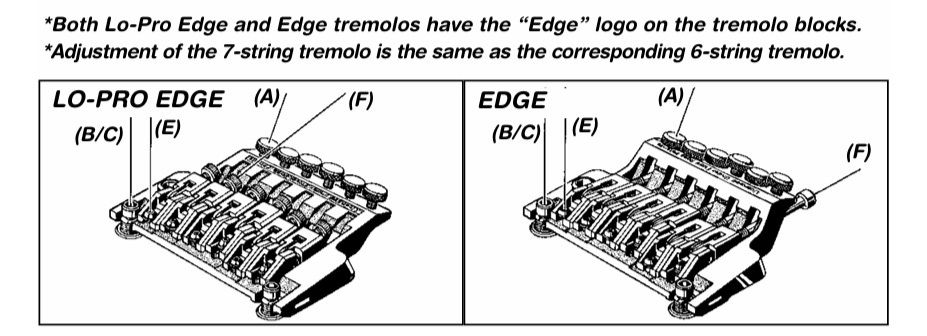
Lo-TRS II
(1994–2004)
Status: Discontinued
From 1994 to 2004 Ibanez used a Korean-made copy of the Takeuchi OEM straight-edge Lo-TRS called the Lo-TRS II which was fitted to some entry-level Ibanez guitars built in Korea by Cort. Japanese guitars were otherwise built with the higher-quality original Lo-TRS. The Ibanez parts number for the lefty Lo-TRS II is 2CL1LC34B for black and 2CL1LC34K for Cosmo black. It has a collar-mounted tremolo arm.
Left handed Ibanez models that received the Lo-TRS II were the Korean-made 1994-1999 RG470L, the 1998-2004 S470L, and the 1997-2000 JEM555L.
This unit is widely criticized by Ibanez players for its low quality and difficulty in maintaining tuning stability. The original OEM responsible for this poor product ceased operations nearly 30 years ago. Unbranded left-handed Lo-TRS/Lo-TRS II replacements can be bought new from Gaskell Guitars. These are made in Korea and are high-quality, superior products.
SLT-101
(1998–2001)
Status: Discontinued
The SLT101 (SLT = Single Locking Tremolo) was another type of single-locking tremolo where the strings are fed through tubes in the rear and do not have to have their ball ends cut off. It is most similar to the Fernandes Head Crasher FRT-6, sharing its oval tail arches and slotted tubes, and nearly identical saddles, but has a typical Takeuchi baseplate. The tail has "Licensed Under Floyd Rose Patents," which is inner-facing. There is no model number or inscriptions on the baseplate or block. It is not one of the standard offerings from the universal Korean or Chinese OEM pools. However, it is 100% identical to the aftermarket Mighty Mite Single Locking Tremolo.
It was used by Ibanez for its entry level guitars bult by Cort in Korea, including the 1998-2001 left handed RG270L. Ibanez Part Numbers are 2SL1C12C (chrome) and 2SL1C12B (black.) It was also used on some Cort guitars.
Ibanez ILT1
(2001–2010)
Status: Discontinued
In 2001 Ibanez used a TRS-101 clone for Ibanez's entry-level superstrat models that were manufactured in Korea and Indonesia, designated ILT1.
Unlike the TRS-101 or TRT-1 originals made by Takeuchi, the top knife edge of the ILT1 baseplate is straight like that of the Ibanez Lo-TRS. As with the related SLT-101 single-locking tremolo, it has a Takeuchi-shaped baseplate, and the arches between the forks at the top of the tail are oval. It was stamped "Ibanez" (upside down) on the face of the upper baseplate and "Licensed Under Floyd Rose Patents." on the tail which was inner-facing. The block has three circles pressed into one side of it from the die clamps, just like the SLT-101. Nowhere on the unit does it say where it is made, or by whom. Ibanez used this tremolo until 2010. Left hand Part Numbers were 2CD1L101B (black) and 2CD1L101C (chrome.) Earlier versions would have been from the Korean OEM pool. The block style of later versions indicates that they were from the Chinese OEM pool.
The ILT1 was used on entry-level Ibanez guitars from 2001-2010, including the 2001-2002 left-handed S370L, and the 2000-2002 left-handed RG270L.
Edge Pro
(2003–2009)
Status: Discontinued
From 2003 the Edge was discontinued, and the Lo-Pro Edge was replaced by the new Edge Pro, an evolutionary redesign of the Edge and Lo-Pro Edge. It was produced by Gotoh exclusively for Ibanez.
The Edge Pro shares nothing with its predecessors in terms of parts except the push-in tremolo arm. It has unique saddles with integrated string locks. Instead of having string holder blocks, the Edge Pro has sliding string holders which are part of the bridge. It can be strung either with or without removing the ball ends of the strings. The tail has "Ibanez" cast in the centre. The block is cast with "Made in Japan" and has a sticker that says "Licensed Under Floyd Rose Patents."
The Edge Pro was produced until 2009 and was fitted to Ibanez's Prestige line and most Signature models. Left handed finishes for the Prestige line were 2ELJ11LK (Cosmo black), 2EL1J11LG (gold), and 2EL1J11LPC (powder Cosmo.) Left hand models were the 2003 RG2570EXL, 2003-2008 RG1570L, and 2009 RG1550ML. The 2009 limited edition left handed JS1200L Joe Satriani Signature was available in chrome only.

Edge Pro II
(2003–2005)
Status: Discontinued
Also in 2003, Ibanez released the Edge Pro II for its Korean-made guitars, and to replace the unpopular Lo-TRS II. It has "Made in Korea" embossed on the underside of the block. As with the Edge Pro, the Edge Pro II can be strung either with or without removing the ball ends of the strings and the saddles have integrated string locks. It has a threaded tremolo collar instead of the push-in system on the Edge Pro. It has knife edge inserts which are replaceable. It has 73mm post spacing, which means it cannot be retrofitted into any guitar with standard 74mm Floyd Rose post spacing, including Ibanez guitars built with Edge or Lo-Pro Edge tremolos. The Edge Pro II was featured on all Korean-made RG models utilizing double-locking systems until 2005.
Lefty Ibanez RG models fitted with the Edge Pro II were the 2003 RG370BL, 2003 RG320FAL, 2003-2004 RG320FML, and the 2004 RG370DXL that were made in Korea. (From 2005-2010 the RG370DXL would thereafter been manufactured in Indonesia.)
ZR (Zero Resistance) tremolo with ZPS (Zero Point System)
(2003–2015)
Status: Discontinued
A third release in 2003 was the Zero Resistance (ZR) tremolo. It was the first Ibanez tremolo to feature a ball-bearing pivot system (like a Kahler) instead of the two-post and knife-edge pivot. It also has offset saddle locking bolts so they can be adjusted without the strings being in the way. It has a snap-in tremolo arm socket and adjustable arm tension.
The unit came with the Zero Point System (ZPS) which is a backstop-like device that consists of a metal bar attached to a pair of springs installed in the bridge cavity outboard of the usual tremolo springs. It applies counter pressure to return the bridge to the zero point (flat position.) It can be set to floating or fixed. The ZR relied on a hex bolt to adjust the spring tension from the rear of the guitar. With the ZPS installed, the ZR has a slightly stiffer feel when pressing down on the arm since there is an extra set of springs involved. The ZR and ZPS were made in China. It was used exclusively on Ibanez S-Series guitars and was discontinued in 2015.
The S420L is the only production Ibanez left-handed model ever to employ the original ZR tremolo, produced from 2010-2013 in Indonesia. The guitar was available only in the one colour: Blackberry Sunburst.
ZPS2 (Zero Point System 2)
The ZPS2 was introduced in 2005 as a replacement for the original ZPS, used in conjunction with the ZR tremolo. The main difference between the ZPS2 and the ZPS is that the ZPS2 uses a tension adjustment thumbwheel which replaced the hex bolt adjustment system in the first ZR. It is made in China.
Edge III
(2005–2017)
Status: Discontinued
The Edge III was introduced in 2005 and has a slightly higher tail than the Edge Pro/Edge Pro II. It is made in China. The Edge III lost the integrated string lock saddles of its predecessors, the Edge Pro and Edge Pro II, and requires the ball ends to be cut off the strings. It also has the odd 73mm post spacing as with the Edge Pro II.
The Edge III eventually replaced the Edge Pro II for Ibanez's Korean and Indonesian-made guitars including the 2005–2010 RG370DXL and the 2009–2012 USA-only RG5EX1L, both made in Indonesia.
The Edge III was phased out and finally discontinued in 2017.
ZR2 with ZPS3
(2008–2015)
Status: Discontinued
In 2008, Ibanez introduced the ZR2 tremolo, which continued to use the ball-bearing pivot system of the original ZR tremolo. It featured a redesigned pop-in tremolo arm in place of the screw-in arm on the ZR, which was prone to breaking. The ZR2 also used a lighter metal in the thumbwheel assembly. The ZR2 was offered on the Japanese high-end Prestige line, while the original ZR continued to be used on the standard models. (In 2010, the pop-in arm was extended to the original ZR too.) Accompanying the new ZR2 was the new ZPS3, which replaced the ZPS. The lefty ZPS3 unit is Ibanez Part Number 2TRX5AE005. The ZPS3 is made of duralumin and is made in China.
The ZPS3 was used with ZR, ZR2, and later Edge Zero, and Edge Zero II tremolos.
The original ZR and ZR2 were both discontinued after 2015. Five years earlier Ibanez was involved in a court action with Floyd Rose and Ping Well Industrial Co. (manufacturer of the similar Floyd Rose Speedloader) brought by Geoffrey L. McCabe alleging patent violations which included Ibanez's ZR tremolo units and the Zero Point System. The case was dismissed in July 2013. Rather than pay licensing fees to McCabe for any future use of the technology, Ibanez switched back to knife-edge pivot designs for which the patents had expired, and royalties to Floyd Rose were no longer required.
Edge Zero Tremolo with ZPS3
(2008–2021)
Status: Discontinued
Also in 2008, Ibanez introduced the Edge Zero Tremolo with ZPS3. The Edge Zero shared the pop-in tremolo arm with the ZR2 and reintroduced the locking studs from the original Edge tremolo. It is a regular knife edge tremolo and was used on Japanese Prestige models. It is made in China.
One common complaint about the Edge Zero is that it lacks the steel backing plate for the fine tuner screws, which was a feature of the earlier designs. This change means that the fine tuners are threaded directly into the more brittle zinc alloy of the tremolo body, which, with even general use, can cause this brittle metal to crack.
Ibanez guitars that come with the Zero Point System have a "Z" in their model designations. The Edge Zero tremolo with ZPS3 was available only in Cosmo black.
Left hand guitars that used it were the RG2550ZL (2009, 2013-2014), RG1570ZL (2010-2013), RG1550MZL (2010-2011), and the RG8570ZL (2015-2017, 2019-2021.)


ZPS3Fe
(2010– present)
Status: Current
The ZPS3Fe is the third version of the Zero Point System, introduced in 2010, for mid-level Ibanez guitars. It is made from a zinc alloy and is made in China. It adds a dial in the spring cavity cover that allows you to adjust the spring tension with your finger (from the back of the guitar) without having to use an Allen key.
Today it is used only with the Edge Zero II, following the discontinuation of the ZR, ZR2 and Edge Zero tremolos earlier. Several left-handed guitars came with the ZPS3Fe.
Edge Zero II
(2011– present)
Status: Current
In 2011, Ibanez released the Edge Zero II which was available with or without the ZPS3Fe system for mid-level guitars and to replace the Edge III. The Edge Zero II is also made in China.
The left-handed Edge Zero II with ZPS3Fe was available in black (2TRX5AF006) or Cosmo black (2TRX5AF008), and the left-handed Edge Zero II with spring hook was available only in black (2TRX5AD032).
Lefty models with the Edge Zero II included the 2011-2014 RG370DXZL (with ZPS3Fe), the 2011-2012 RG870QMZL (with ZPS3Fe), the 2013-2014 RG450DXBL (without ZPS3Fe), and the 2013-2014 RG950QMZL (with ZPS3Fe.)
As of 2025 the only left-handed Ibanez guitar with the Edge Zero II is the Nita Straus Signature JIVA10L, first released in 2022.

Reintroduced Edge and Lo-Pro
(2010– present)
Status: Current
In response to the largely negative feedback about the Edge Zero, Ibanez reintroduced the original 1986 Edge and 1991 Lo-Pro Edge tremolos for their Japanese-made Prestige Series guitars in 2010. Both continue to be used to this day.
The current Edge and Lo-Pro Edge tremolos no longer need or have a Floyd Rose licensing statement on the tail as they did originally. The block still says "Ibanez EDGE" with "Japan" on a second line.
The reintroduced Edge tremolo was used on the following left handed Prestige Series guitars: 2011-2013 JEM7VL Steve Vai Signature, 2011-2015 JS1200L Joe Satriani Signature, 2016-2017 Prestige Series RG655L, 2016-2019 RG652AHML, 2017 30th Anniversary JEM777L, 2017 RG652MPBL, 2018 RGR652AHBL, and the 2018-2020 Genesis Collection RG550L reissue (available in yellow or red.)
It is used on the current (2024-) left-handed RG550L-DY (Desert Sun Yellow Mancina) Genesis Collection.

The re-introduced Lo-Pro tremolo was fitted to the 2020-2022 left-handed RG5320L.

Ibanez have reduced their lefty offerings as of 2025, but they do offer the Lo-Pro tremolo on the 2025 lefthanded RG5120ML.

Ibanez Standard DL Tremolo
(2013– present)
Status: Current
The Ibanez ILT1 tremolo was used on Ibanez entry-level guitars until 2010 leaving only the Edge III for budget models, which in turn was phased out and fully discontinued in 2017. Before then, Ibanez released it's Standard DL tremolo which was introduced in 2013. It is essentially another TRT1 / TRS-101 / ILT1 clone, made in China.
This version has the Takeuchi baseplate shape, and "Ibanez" (right side up) etched on the top. There are no more licensing statements. A box with the block size inside it is stamped into the block. Members of the public can buy equal-quality, clones of this clone from AliExpress, eBay, and Amazon for around $40 or $50.
Much like its predecessors, the Standard DL tremolo is designed for entry- to mid-level Ibanez guitars which are made in Indonesia or China, such as the Indonesian-made 2015-2019 left handed RG450DXBL and the Chinese-made left handed Steve Vai Signature JEMJRL, which has been in production since 2016 (and costs around $1,000 here in Australia.)
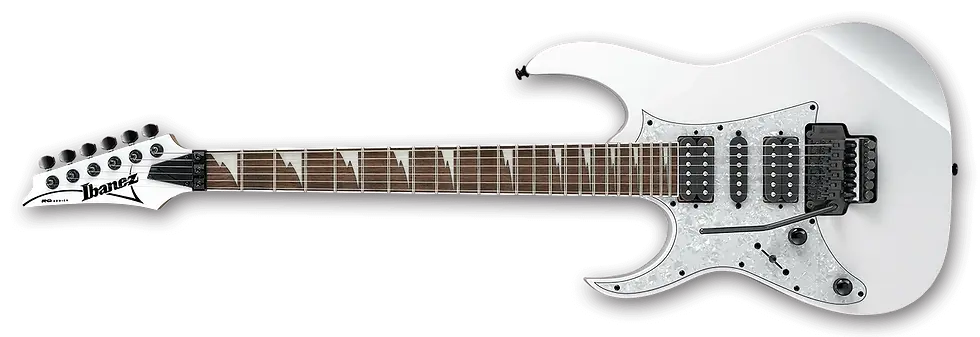
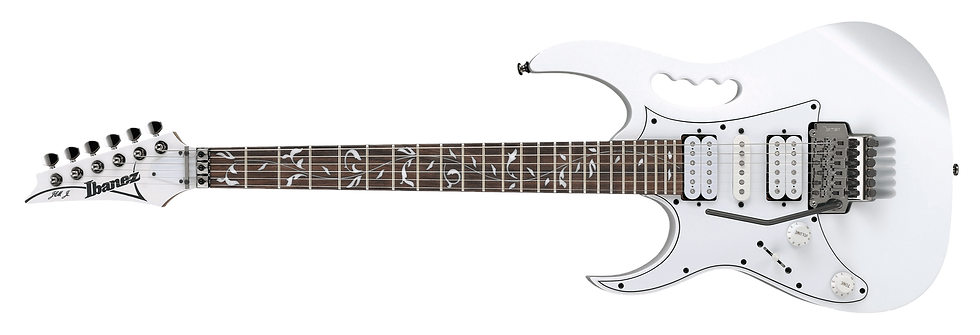
Yamaha
Yamaha Corporation started making acoustic guitars in 1966, followed by electric guitars in the 1970s. Their guitars have always been built by contracted factories in Japan, and later in Korea, China, and Indonesia. The company has never been very lefty-friendly, but has made token offerings on and off over the years.
Yamaha was one of the first brands to plagiarize Floyd Rose designs early on, introducing a "Vibrato System" bridge with a locking nut in 1984. (This was before Floyd Rose had been granted the '461 and '236 patents for a fine tuner system.) While it had no name beyond "Yamaha Tremolo Unit", it utilized knife edges for the pivot, and fine tuners at the end of individual saddle arms. It also loaded the strings through the back and did not need the balls cut off. Each saddle had a locking plate that screwed down with a grub screw. The baseplate had a rectangular turret with threaded hole for the tremolo arm to screw into. The unit only pitched down. It was introduced on Yamaha's new-for-1984 SBG-1300TS model. It continued to be used on the 1985 SBG-1300TS, Yamaha's new EX Explorer and VX Flying V models, and the SE-700E.
Further developments of this tremolo system evolved into the highly-respected Rocking Magic Series, including left handed versions, used by Yamaha all the way through to the mid 2000s.
Yamaha RM-II
(1985–1987)
Status: Discontinued
Yamaha's second proprietary tremolo system was the Yamaha Rockin' Magic RM-II introduced in 1985. This was a single locking tremolo that had the strings fed through from the rear of the base (rather than tubes as on the original Floyd Rose II and most other single locking variants.) The strings are double locked by a plate with a hex screw. Unique to Yamaha is that the unit has horizontal screws on springs at the rear of the base for each saddle that when turned move the saddle forward or back for easier intonation setting. The block on the RM-II is "forked" and has a pin running through it for the spring hooks.
The Yamaha 1986 catalog says the following: "The new Yamaha Rockin' Magic II locking vibrato system adds a new dimension to the concept of radical pitch bending. The low profile bridge allows for right handed muting techniques without being hindered by bulky hardware. String locks at the nut and on each individual saddle ensure perfect tuning stability at all times. Individual fine tuners on each string provide for minute pitch adjustments while playing. The Rockin' Magic II uses standard ball end strings and is capable of both upward and downward pitch bending." There were no inscriptions anywhere on the unit. There was a lot of steel in this unit and therefore it added significant weight to the guitar.
It was used on the 1987 Yamaha left handed RGX-312L and early versions of the 1987 Yamaha left handed RGX-612SL, both made in Taiwan. This very rare Japanese-made left handed RGX-612DL from 1987 (likely a special order) has the RM-II.
Yamaha RM-Pro
(1988–1992)
Status: Discontinued
The RM-Pro was a Yamaha proprietary single locking tremolo, introduced in 1988, that allowed the strings to be fed through from the rear of the base. As with the RM-II, the strings do not need the ball ends cut off and are each double-locked with a bullet-shaped plate. It was unique in that it used needle bearings at the fulcrum to ensure smooth operation and precise pitch return. Right-handed units featured a pitch rise adjustment, which makes it possible to set a maximum amount of pitch bend; lefty versions did not have this. It also has a pop-in-pop-out tremolo arm. There was no licensing inscription or model identification on the unit. This tremolo last appeared on the 1991 "Yamaha Hard Style" mid-level RGX and higher-level RGZ Series.
Later versions of the 1987-1989 left handed Yamaha RGX 612SL and Yamaha SE612L were made with this tremolo.
Yamaha RMX II
(1988–1992)
Status: Discontinued
The RMX II was introduced in 1988 and is a nod to Yamaha's original 1984 Vibrato System. It is a single-locking tremolo where the strings are fed through the back and the ball ends do not need to be cut off. Each string is locked into an individual grooved saddle which has its own fine tuner at the rear; thus, all six saddles in line with each other create the appearance of a "tail." It has intonation screws under the rear of the baseplate to adjust the saddles. The unit has a pop-in tremolo arm. It was discontinued after 1991.
The Yamaha left handed RGX-312L that was made in Taiwan from 1987-1990 initially came with the Yamaha RM II tremolo, then the RMX II.
Here is an excellent video from YouTube user WatchWatchBoi presenting a close-up of the left-handed RMX II from a Yamaha RGX-312L.
Yamaha RM-Pro II / RM-Pro III
(1991–2003)
Status: Discontinued
The Yamaha RM-Pro II is an original Floyd Rose-style tremolo with one straight knife edge. It first appeared in the 1991 Yamaha catalog on the new Pacifica model and highest-spec "Yamaha Hard Style" RGX-612JS, and on the "Yamaha Advance Style" Sonare Series. It also featured on several Japanese signature models until 1995. It was gradually replaced by the identical Rockin' Magic Pro III, which in turn was used until 2003.
The RM-Pro II and III are unique in that they have a two-piece base, one of which is the housing for individual horizontal intonation screws that, when turned, move the saddles forward or back on the main baseplate for precise adjustment. Both plates screw into the block. This additional saddle adjustment functionality was pioneered by Yamaha and used on earlier tremolos. Each saddle assembly includes its own vertical tube that you feed the string through from underneath. The strings do not have to have their ball ends cut off. Additionally, the saddles have string locks like a regular Floyd Rose.

Here is an excellent video guide on the Yamaha RM-PRO II from Youtuber user Itty: Yamaha RM PRO II Assembly Guide - YouTube
The RM-Pro II and III are immediately recognizable for the fact that the licensing statement is stamped upside down on the baseplate, irrespective of whether the guitar is left handed or right handed. It says: "YAMAHA RM-PRO II" or "YAMAHA RM-PRO III" with a second line saying "Licensed Under" and a third line saying "Floyd Rose Pats." All three U.S patent numbers are stamped on the block.
From those I've seen, it appears that Yamaha couldn't be bothered to use a proper left-handed baseplate, as they just drilled the straight edge side of a right-hand base for the lefty tremolo arm, hence the lefty versions are technically "upside down."
Left hand guitars made with this tremolo were the 1991 Yamaha RGZ 612L and 1991-1993 Yamaha YG 612L, both made in Taiwan; and the 1992-1995 Yamaha Pacifica 912JL, made in Japan. Both the Pacifica 912JL and YG612L were explicitly stated in Yamaha catalogs as being available left-handed. The Pacifica became a regular left-handed offering.
Yamaha RMX III
(1991–1994)
Status: Discontinued
The RMX III was a redesign of the RMX II adding a one-piece tail structure for the fine tuners instead each saddle having its own tuner. It also has one straight knife edge. It is still single locking in the same way as the RMX II. It has a torque adjusted tremolo arm which pops in and out. There are no inscriptions or identifiers on the base or block. The RMX III first appeared in the 1991 Yamaha Japan catalog on the lower-spec "Yamaha Hard Style" RGX and RGZ Series and the lower-spec YG Series until 1993.
From about 1994, Yamaha began using a modified OEM version of the Takeuchi TRS-PRO on some of its Superstrats all the way through to the 2000s. After that, Wilkinson tremolos were adopted.
ESP Japan (1980s and 1990s)
Electric Sound Products (ESP) of Japan began as a guitar repair shop in Shibuya, Tokyo in 1975. In 1979 they started a custom shop and established a presence in the United States in 1981. The company opened its own factory in Nagano, Japan in 1983. A second factory opened in 1986 in Sado Island, Niigata-ken Japan. During the 1980s and 1990s, the company was an OEM producer for several brands, most famously Kramer and Jackson. In 1990 ESP bought Schecter Guitars. ESP has, for the most part, been quite lefty-friendly. One of the few.
ESP offers five brands: Navigator, which is exclusive to the Japanese domestic market and consists of high-end Fender and Gibson replicas (discontinued July 31, 2025); ESP for the international market with high-end and intermediate guitars; Edwards for the Japan domestic market aimed at intermediate to advanced players; entry-level brand Grassroots for the Japanese domestic market; and entry-level brand LTD for the international market. Edwards was launched in 1990. Grassroots was launched in 1993, and LTD was launched in 1996. Grassroots and LTD are made in Indonesia or China. Gotoh was the official hardware supplier for ESP and sub-brands made in Japan.
ESP Mighty Vise
(1983)
Status: Discontinued
See: Part 5: No-Names, Fakes, Unknowns, and Never Left Handed
ESP Magician
(1983)
Status: Discontinued
The ESP Magician was the first ever publicly advertised, Japanese-made Floyd Rose final design, released just after Hanson Metalwork's initial run in the United States and several months before Schaller began production in Germany.
Author's comment: It is odd that ESP would release it before Fernandes, considering Fernandes had the contract. Fernandes, at this time, did not know the prototype had progressed to a production model.
The Magician was first announced in the July 1983 issue of Young Guitar magazine in the "Something New" section. It said:
ESP ファイン・チューナー付ロック・サドル・トレモロ MAGICIAN ¥50,000 フロイド・ローズ・タイプのトレモロ・ユニットにファイン・チューナーを取り付けたのがこのマジシャン。サドル部に設けられたファイン・チューナーにより、ミュート奏法の邪魔にならずに演奏でき、信頼性の高いプレイが可能である。このチューナーは何度でも正確なチューニングができ、チューニングの狂いを防ぐ効果もあるという優れもの。さらに、ステンレス製などの部品と特別加工されたプレートにより、音の伝導性が向上している | ESP Locking‑saddle tremolo with fine tuners MAGICIAN ¥50,000 The Magician is a Floyd‑Rose‑type tremolo unit fitted with fine tuners. Because the fine tuners are located at the saddle section, they do not interfere with palm‑muting and allow reliable, high‑precision playing. These tuners enable accurate tuning repeatedly and help prevent tuning drift. In addition, the use of stainless parts and specially processed plates improves sound transmission. |
It was then featured in ESP's August 1983 Export Catalog. The catalog lists the Magician as a standalone kit or factory option for Custom Shop models.
ESP カスタム・ハードウェア:マジシャン・トレモロ・システム 世界初のフル・ファイン・チューナー・ロック・トレモロ。ダブル・ロッキングでピッチ・スタビリティを保証。ベンド・スチール・ベースプレート、T-ブロック・サドル、ナット/ワッシャー・アーム機構。ゴールド・フィニッシュオプションあり。対応モデル:Mirage SE-170, Navigator VHシリーズ。価格:¥50,000 (クローム)/¥55,000 (ゴールド)。 [Specs: Stud spacing 74mm; Knife-edge pivot; Compatible with locking nut.] | ESP Custom Hardware: Magician Tremolo System World's first full fine-tuner locking tremolo. Double-locking guarantees pitch stability. Bent steel baseplate, T-block saddles, nut/washer arm mechanism. Gold finish option available. Compatible models: Mirage SE-170, Navigator VH series. Price: ¥50,000 (chrome)/¥55,000 (gold). [Specs: Stud spacing 74mm; Knife-edge pivot; Compatible with locking nut.] |
It was etched with "MAGICIAN" in capital letters on the upper base. The product disappeared after the September 1983 catalog. A very rare example of a left-handed ESP guitar with the Magician is this 1983 ESP SE-260L.
ESP Synclear
(1987–1993)
Status: Discontinued
Beginning in 1987, ESP produced their Synclear tremolo for their own ESP and Edwards brand guitars and custom-shop Navigator brand under new Floyd Rose licensing agreements. The Synclear had some unique proprietary features while still based on Floyd Rose principles. Each saddle could be individually adjusted for correct intonation by way of a vertical hex screw on each saddle and a washer underneath that stopped it from moving when tightening the screw. This was later changed to a Floyd Rose-style saddle arrangement. The block is L-shaped, and the tremolo arm screws into the block. It has "ESP" on the tail and "Licensed Under Pat No 4549461 No 4497236" embossed upside down on the upper baseplate. It was produced until 1993.
The Synclear is not a straight swap for an Original Floyd Rose as the sides of the baseplate of the Synclear are oval and the sides of the Floyd Rose baseplate are straight. The post spacings, however are the same.
The Synclear was also produced left-handed. Examples of left-handed ESP guitars that came with the Synclear include this mid 80s left handed ESP Mirage Deluxe, this ESP Custom Shop left handed ESP Random Star, and this late 80s "parts bin" era Japan-only left-handed ESP Kramer Focus 1000.
Jackson-Charvel
Jackson JT-6
(1987–1989)
Status: Discontinued
Jackson-Charvel used the Chushin Gakki factory in Nagano exclusively for its Japanese-made guitars. In 1987, the company commissioned Taiwanese company Ping Well to produce an OEM tremolo for its Japanese guitars. This was the JT-6. It replaced the Kahler tremolos in use up until this time.
The JT-6 is actually an exclusive Jackson proprietary system. It was different from original and OEM Floyds in that the fine tuners ran horizontally out the back of the unit along with the string lock screws rather than sitting vertically on the tail. The saddles also had string lock blocks with cover plates, making the whole saddle surface flat. It was embossed with "Licensed Under Floyd Rose Patents" on the tail, with "Jackson" on the front of the block and "Made in Taiwan R.O.C" on the back of the block. The block also had a sticker with "#40121587." The JT-6 has a distinctive rough "orange peel" finish, even rougher than the Schaller Floyd Rose II. It was made of pot metal. Public reviews over the years suggest that they were not considered to be of good quality.
Jackson's left-handed Dinky model of that era came with this tremolo as did the left handed 1987 Charvel Model 3 and left handed 1988 Charvel Model 3. Another example (without the capped string blocks) is here: Charvel Model 3. Left hand versions of the 1987 Randy Rhoads, Soloist, and Strat-body models could be custom ordered. The JT-6 was standard for each.
It was replaced in 1990 with the Takeuchi TRS-101.
Kaman Music Corporation
KMD Double Locking Tremolo System
(1988–1994?)
Status: Discontinued
Kaman Music Corporation is a U.S company that distributes multiple musical brands in the United States and was the owner of Ovation guitars and its sub brand Applause. In the early 1980s they released the Celebrity brand of solid body guitars and basses, priced to be between the Applause and Ovation brands, which were manufactured by Samick in Korea. These became the GTX range by Applause in 1988. Also, in 1988 Kamen acquired Hamer Guitars. Kaman and Hamer were bought out by Fender USA in 2008.
The Applause GTX Series were beginner-level guitars made to compete with the lower-end B.C Rich, Kramer, and Jackson superstrats. They were very cheaply made, with plywood bodies and cheap electronics, but came with Ping Well tuners. Hamer quickly became the popular brand for solid body guitars and the Applause GTX range was dropped in 1994.
The GTX superstrats came with a proprietary double locking tremolo called the "KMD double locking tremolo system" which was Kaman's effort to produce an unlicensed Floyd Rose. This tremolo has "KMD" stamped on the upper baseplate. It has an L-shaped block with no other ID or information anywhere. It has horizontal fine tuners, and the strings are fed from underneath through the block. It is unique in that it has no "tail." Today, the KMD would be one of the rarest non-genuine Floyd Rose style tremolos ever.
Somehow, this tremolo ended up on what appears to be a non-catalog version of the 1988 Aria Pro II XR Series. These guitars have one humbucker and two slanted single coil pickups and a reverse headstock. Left hand models were made such as this 1988 XR Series and this 1988 XR Series.
1987 was a transitional time for Aria Pro II. Matsumoku had closed down in February and production had moved offshore to Samick in Korea, so it is possible this KMD product was used while Jin Ah was tooling up to produce their version of the ACT-3. The body and specs of this XR orphan look like GTX guitars. Samick built both brands. I have no proof.
Glossary of Terms
Batch-produced: Stock products manufactured in limited runs, not custom orders.
Custom order: Made-to-order units, often with long lead times or higher cost.
License stamp: “Licensed Under Floyd Rose Pats.” on a tremolo post-2008 does not indicate an active agreement — it’s legacy tooling or marketing.
Licensed Floyd Rose: A tremolo made under official Floyd Rose branding but by a third-party manufacturer.
N.O.S. (New Old Stock): Unused parts from discontinued production runs.
OEM (Original Equipment Manufacturer): A third-party company that produces parts for other brands.
OFR: Original Floyd Rose. Applies to the modern FRT100 Series currently made in the USA and formerly made in Germany. Historically also refers to the Japanese and German FRT-5.
Proprietary: An in-house design, self-branded and used only for the company's own products, usually manufactured by an OEM. For example, the Jackson JT6 tremolo was a property of Jackson-Charvel in the United States, manufactured by OEM Ping Well of Taiwan.
Tremolo: A musical effect where the volume (amplitude) of a note is rapidly modulated, producing a pulsating or shuddering sound. It is distinct from vibrato, which otherwise affects pitch, not volume. For decades this term has been technically misused to describe pitch-bending effects such as those produced by guitar vibrato systems.
Upcharge / Surcharge: An upcharge is an extra charge for an additional service or option, while a surcharge is an extra charge added to the standard cost, often for specific circumstances.
Vibrato: A musical effect where the pitch of a note is varied up and down, usually rapidly, creating a warbling or wavering sound. This expressive technique adds warmth and richness to music, commonly used by singers and instrumentalists.











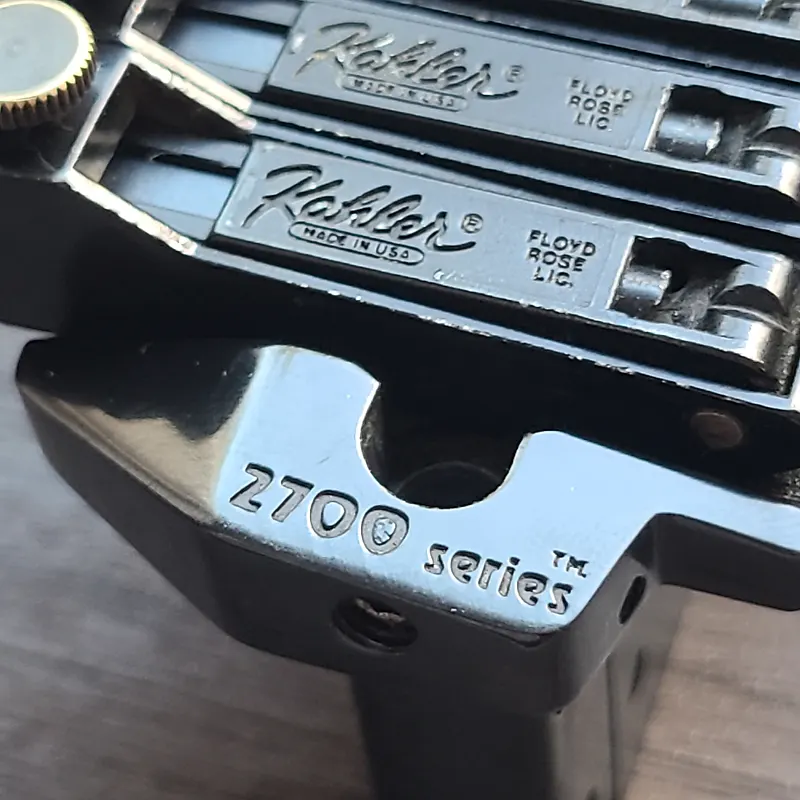
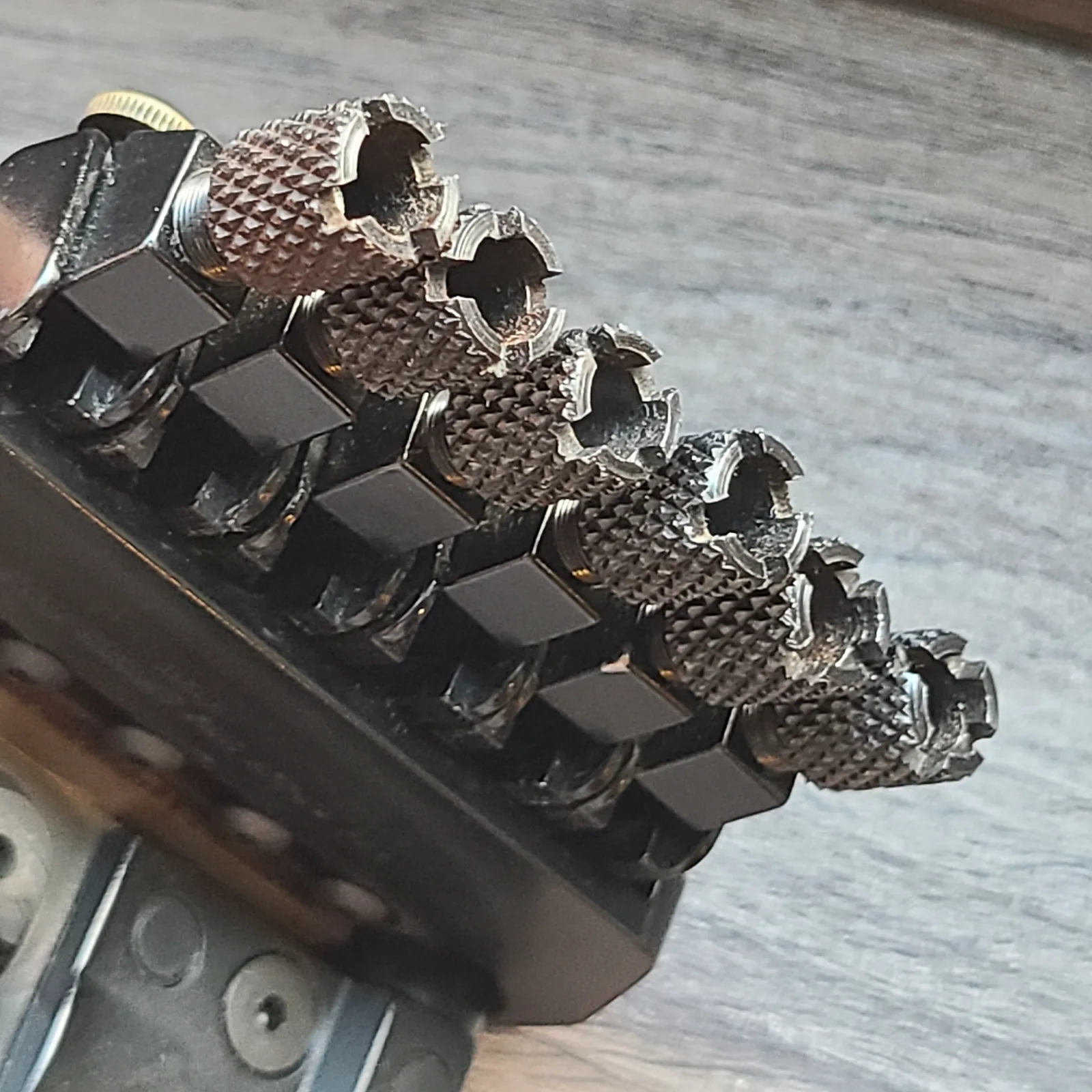


































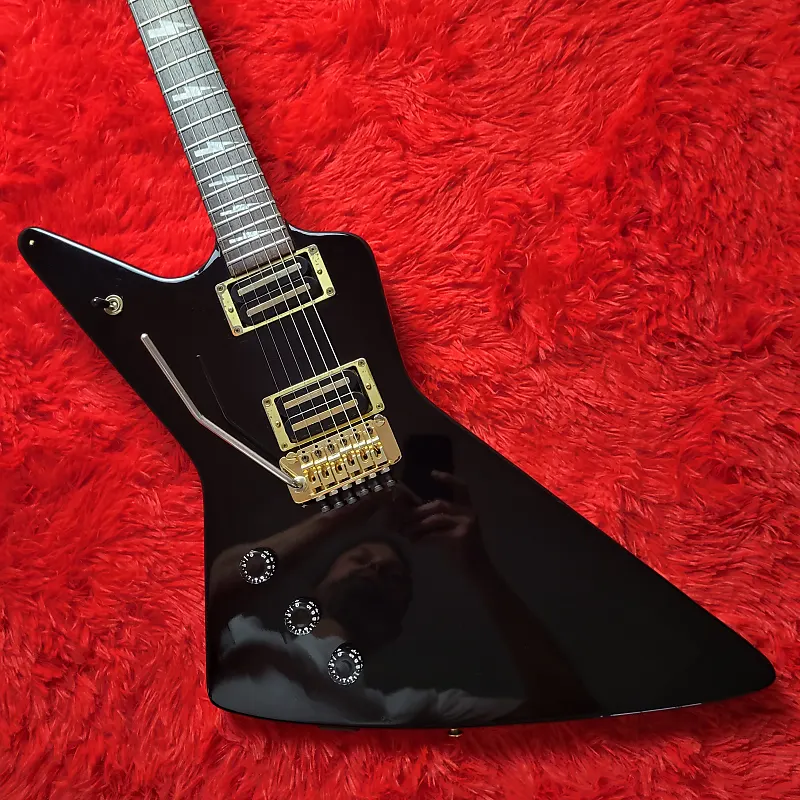
























































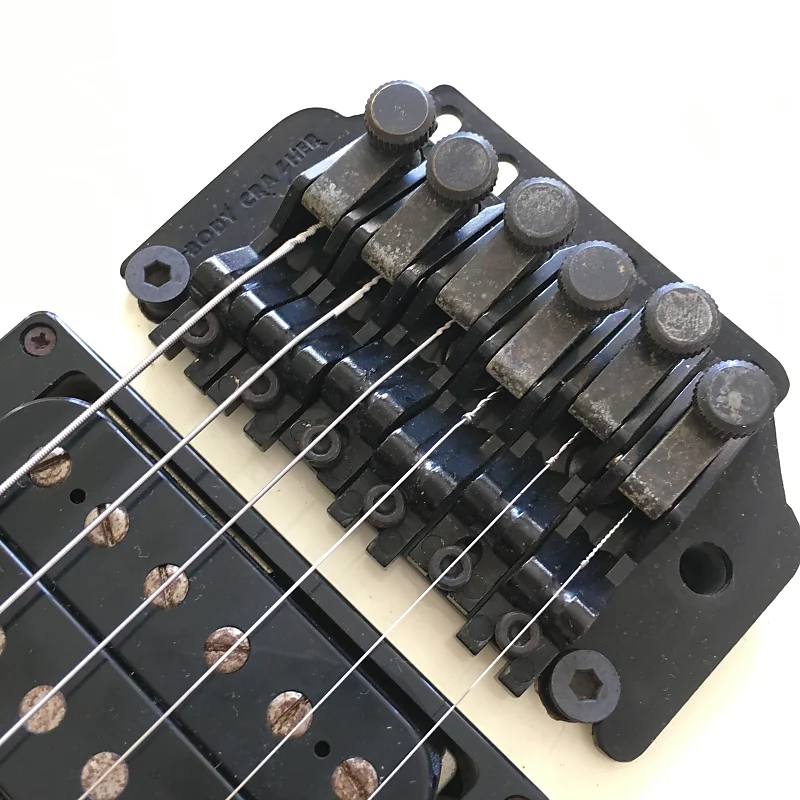













































































































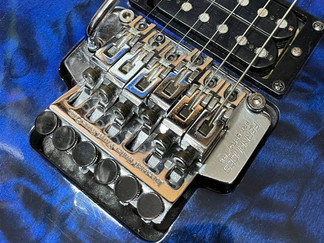

















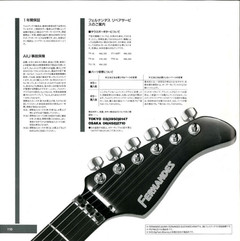









































































































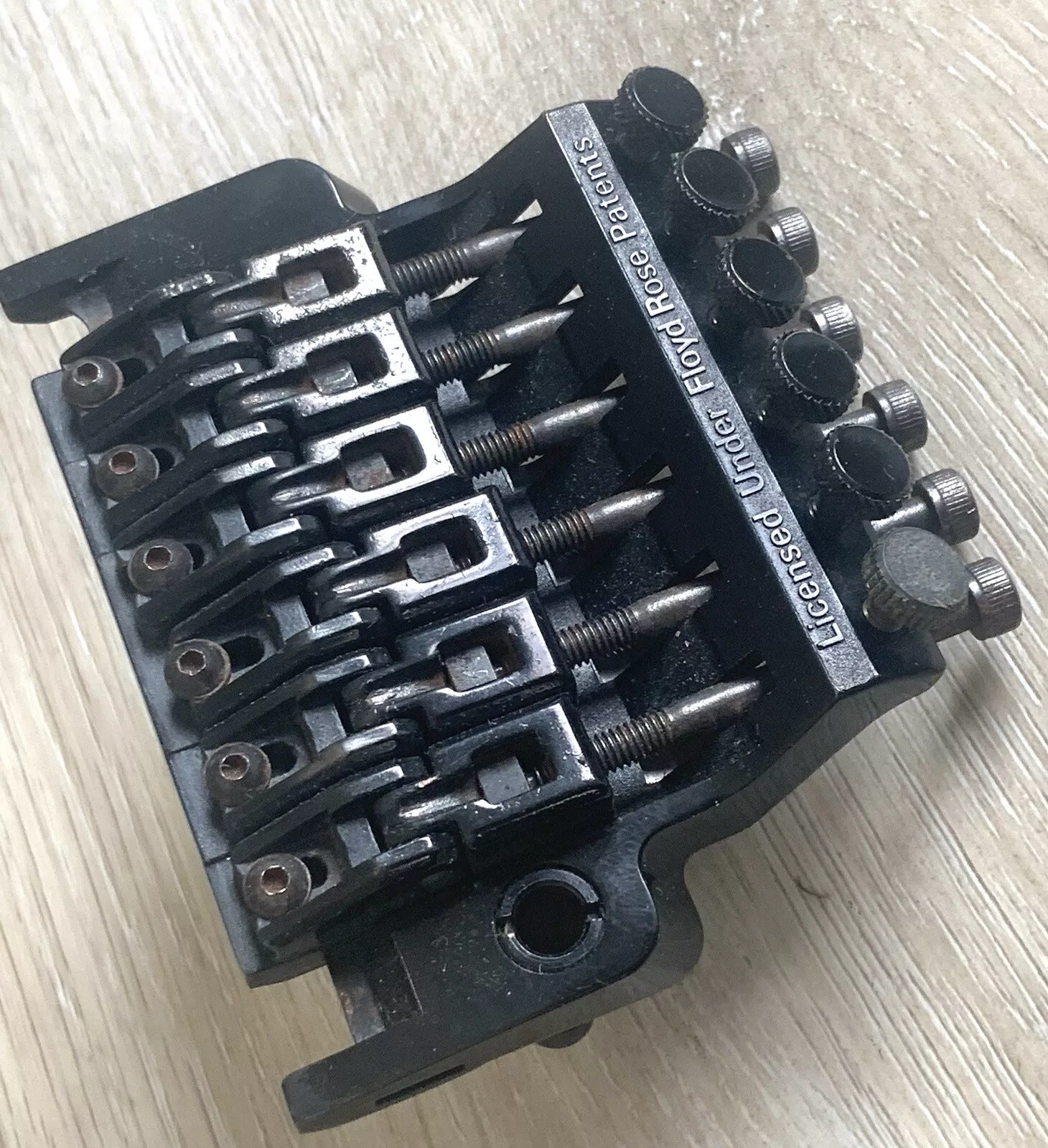

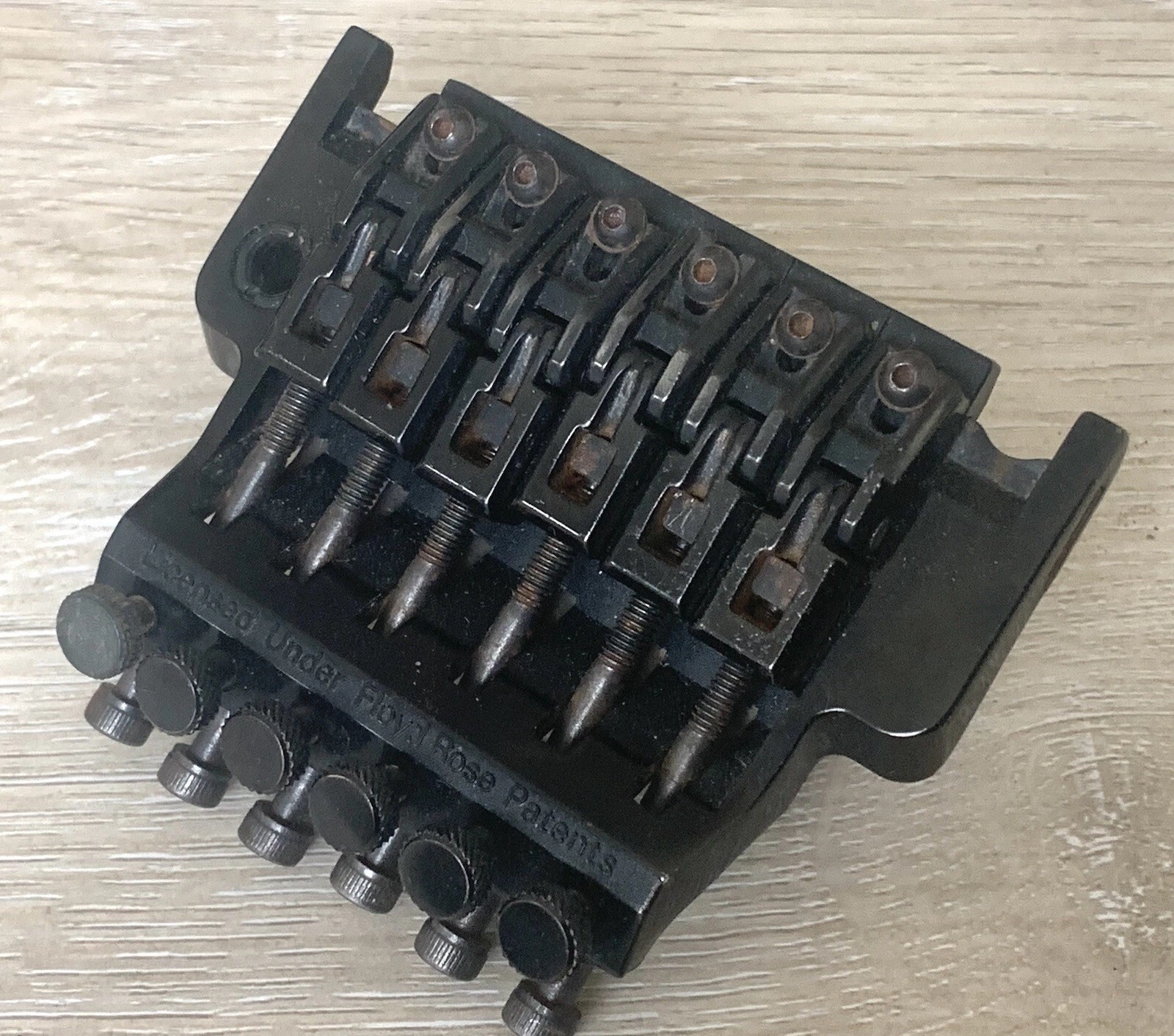
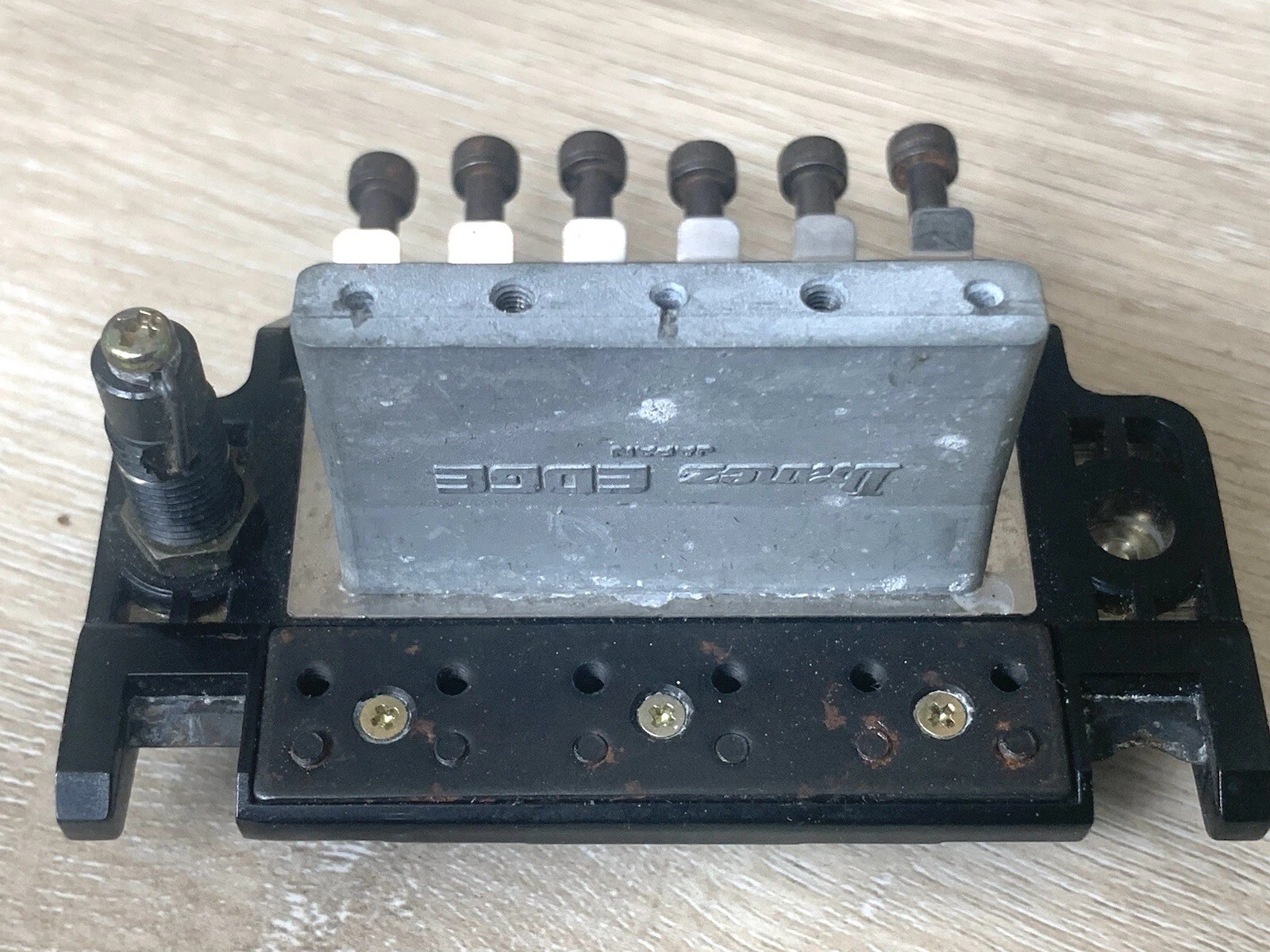

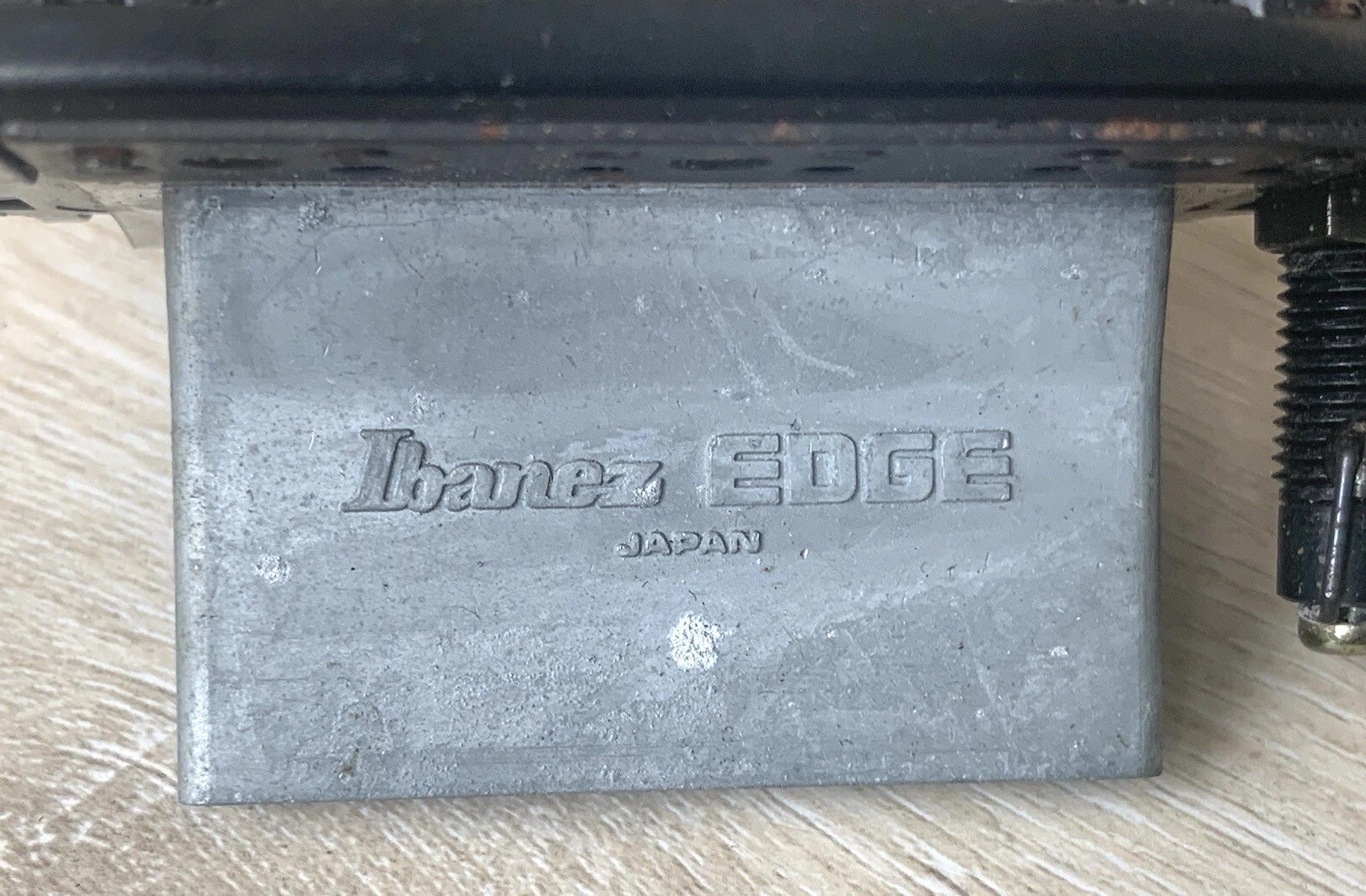




































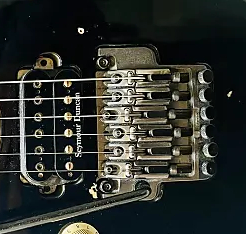









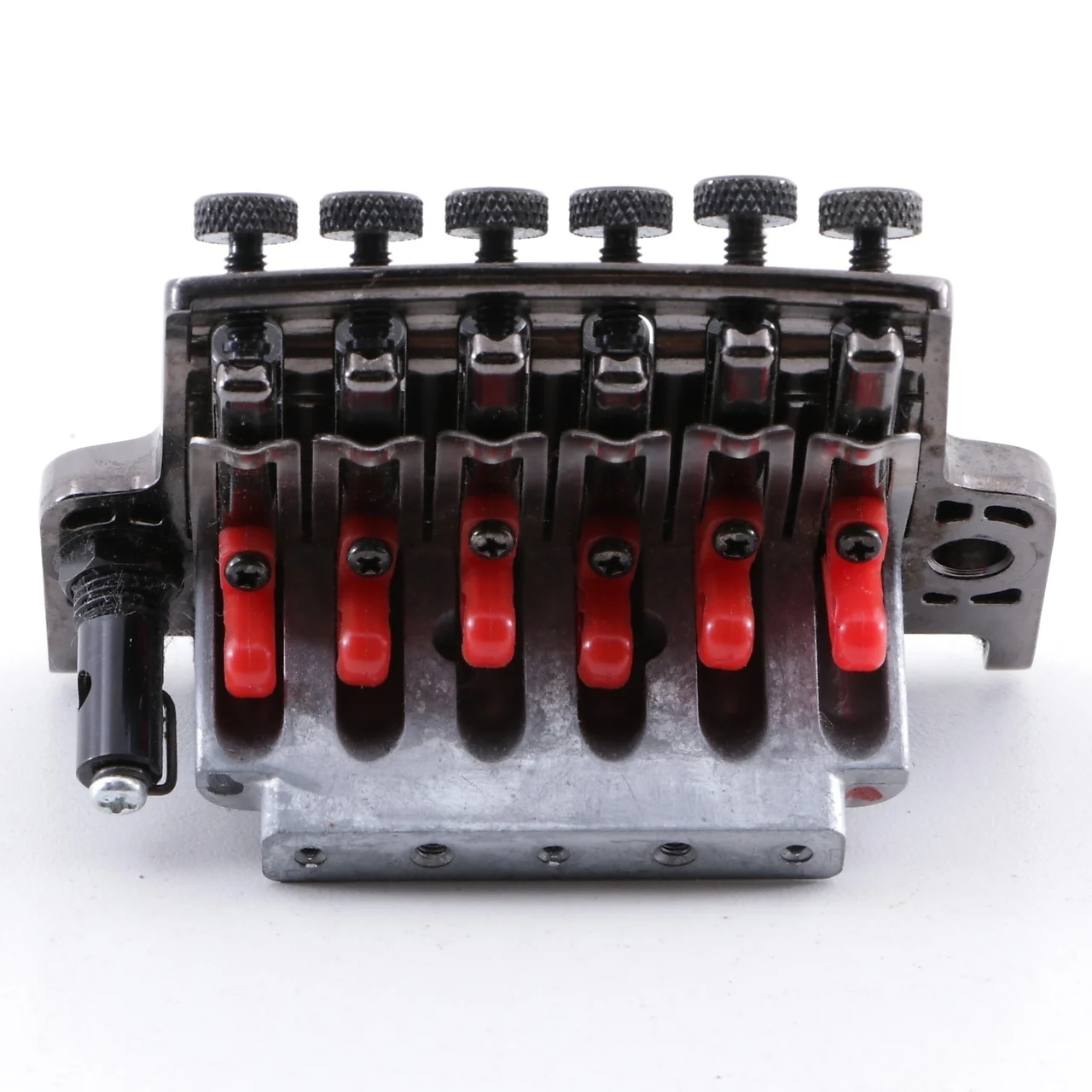
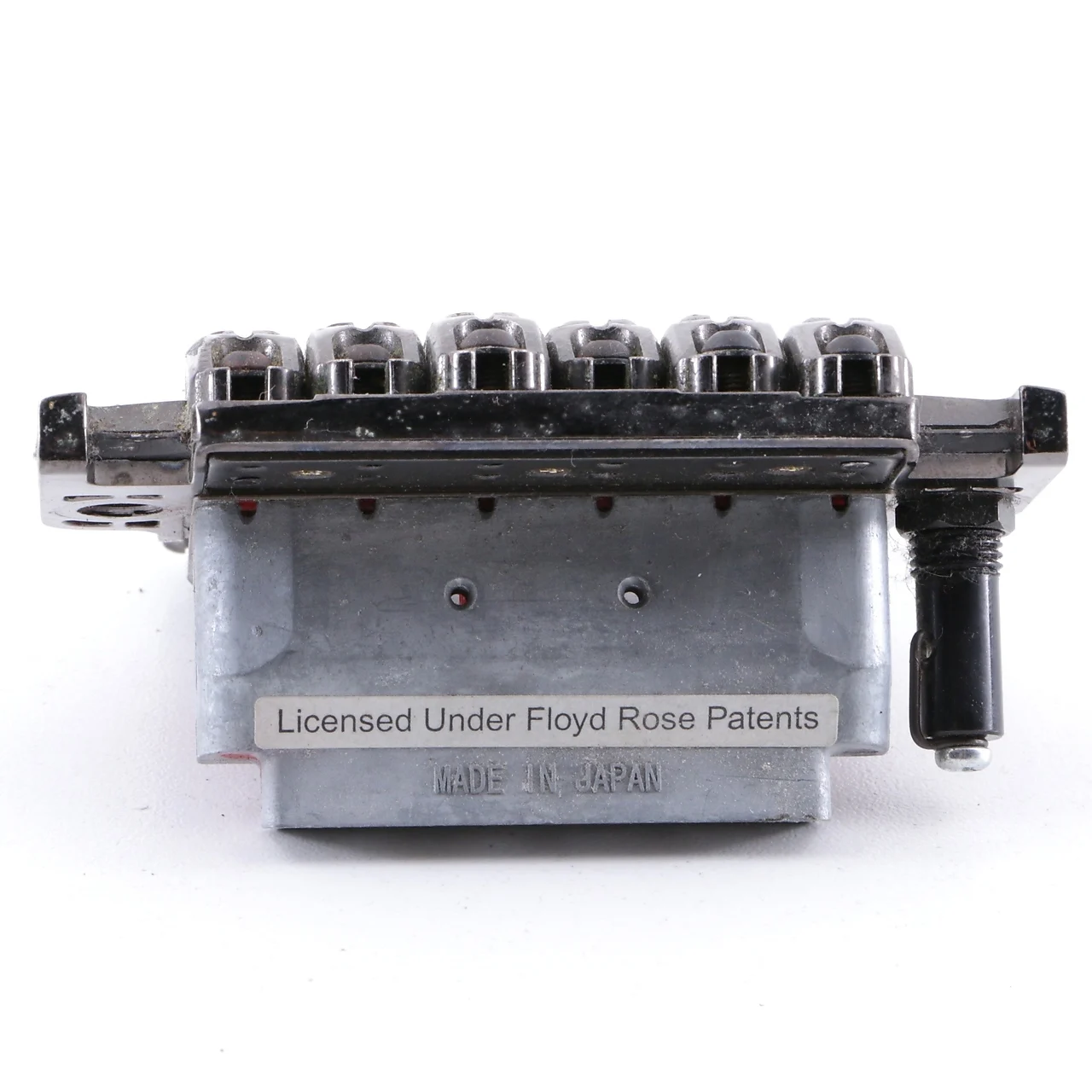






















































































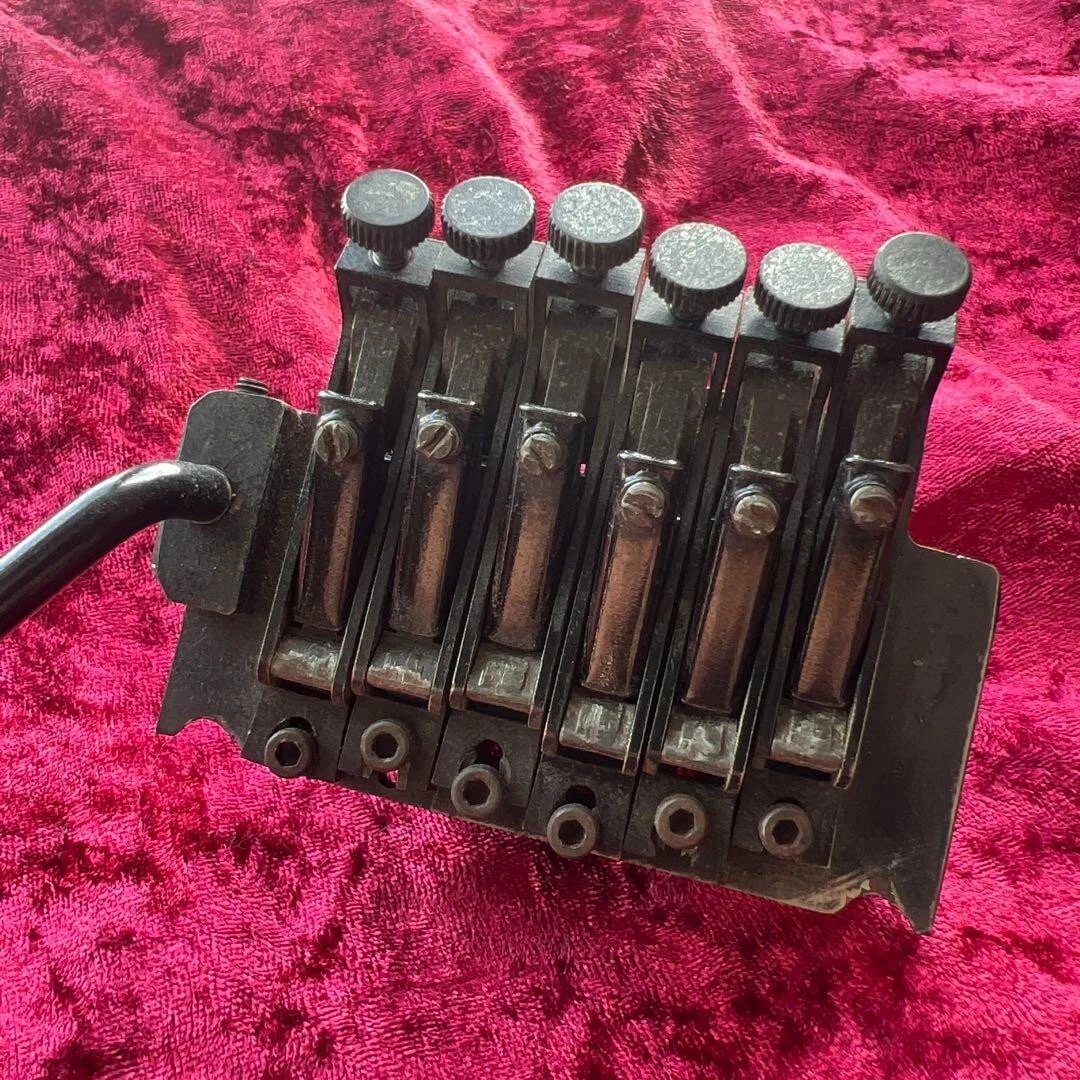
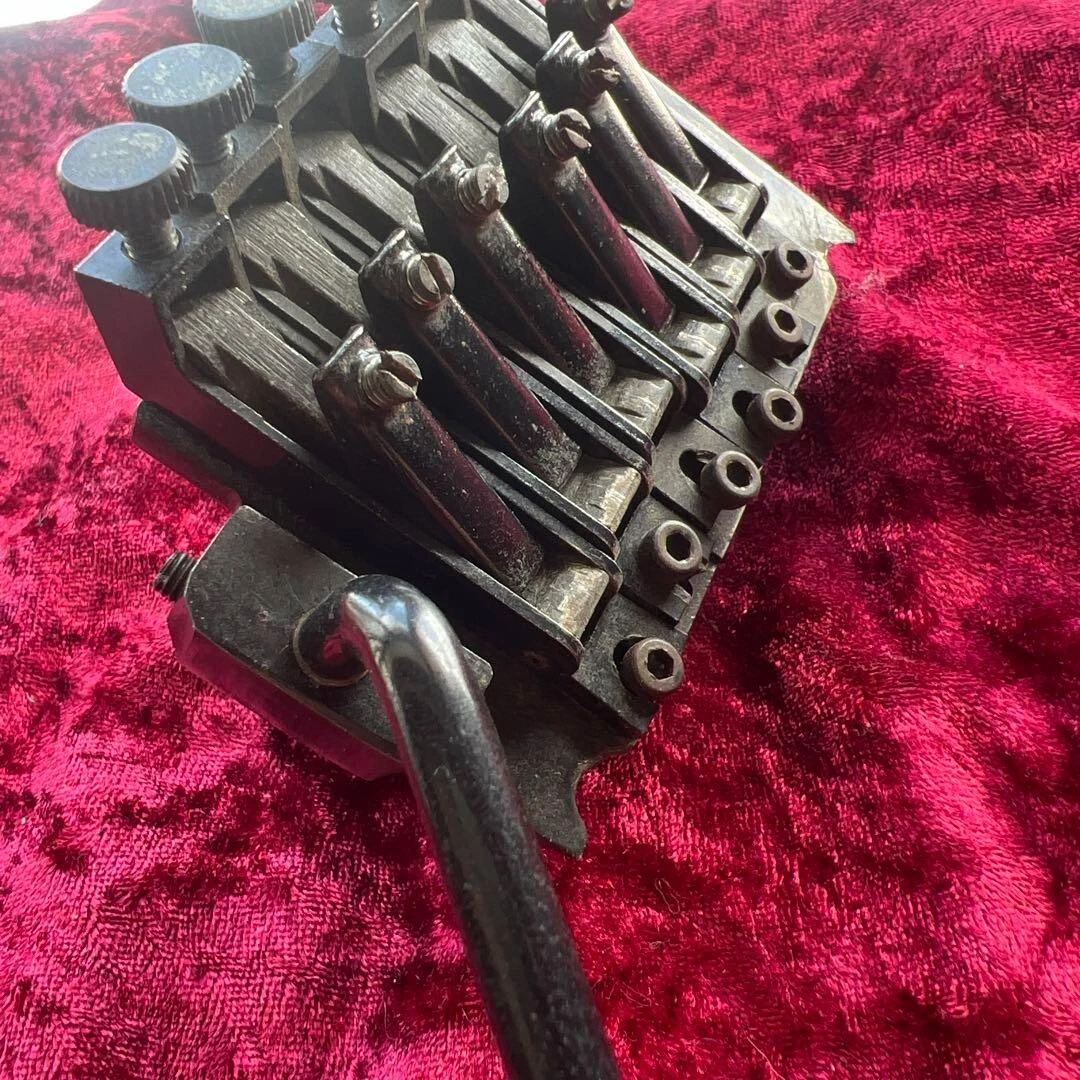
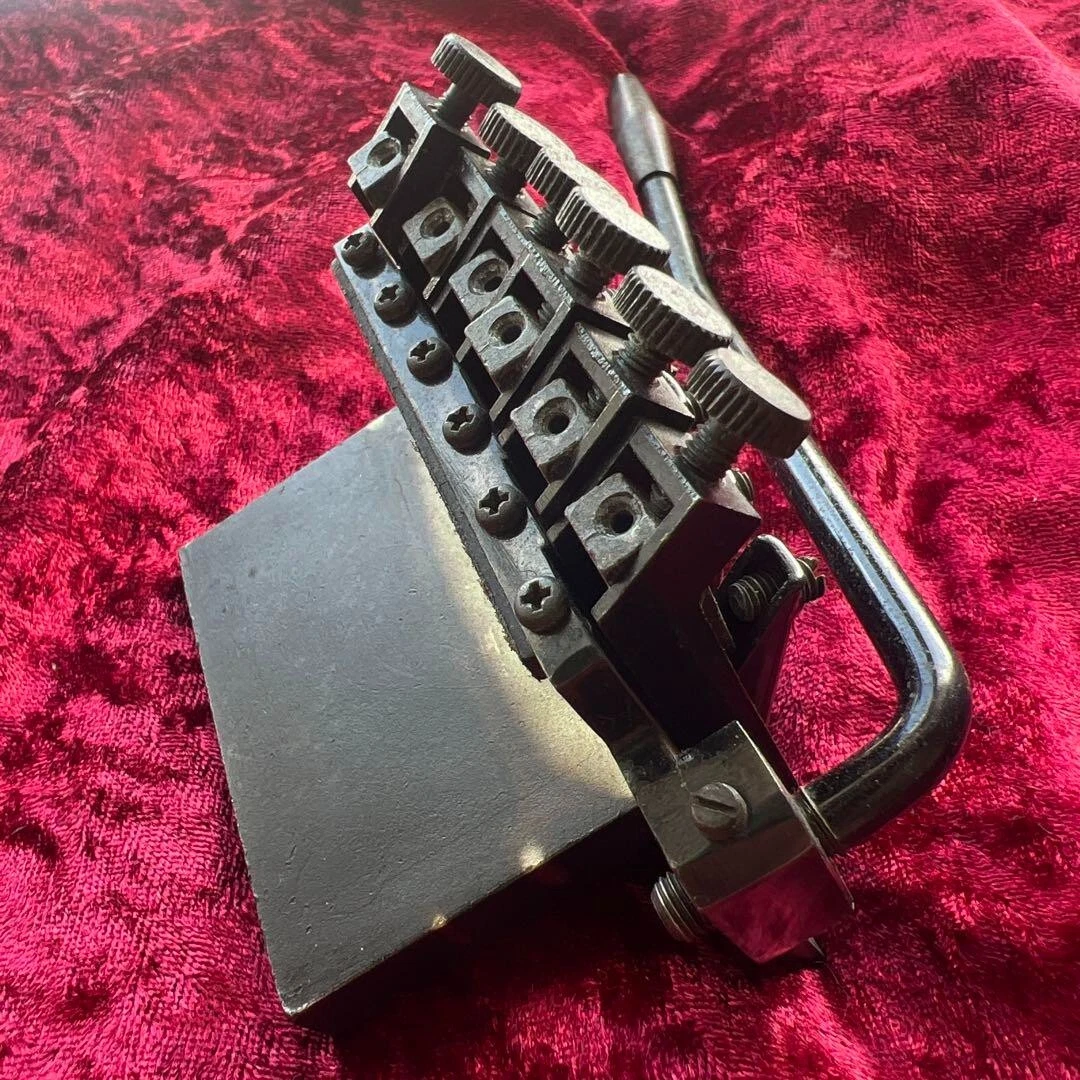
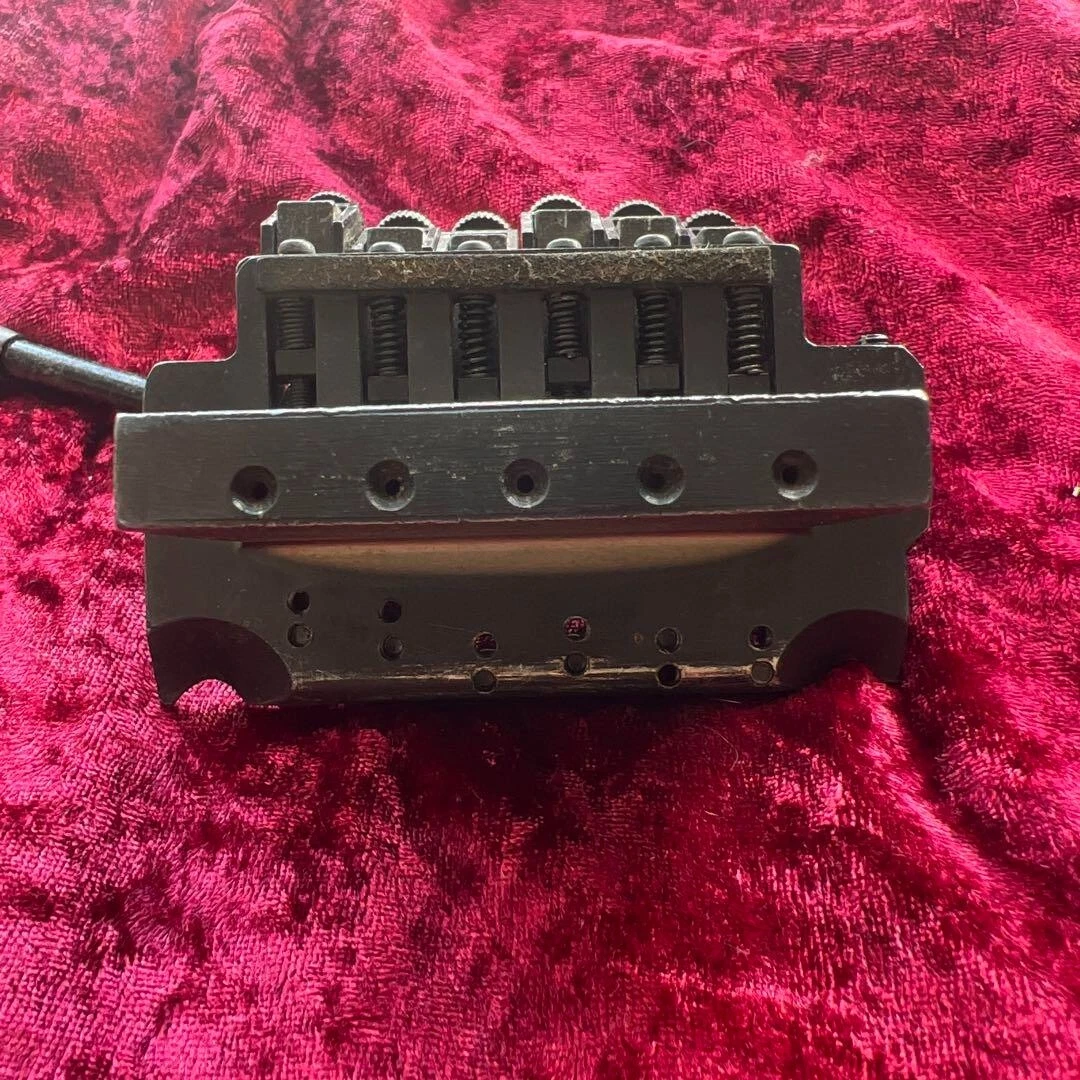



















































































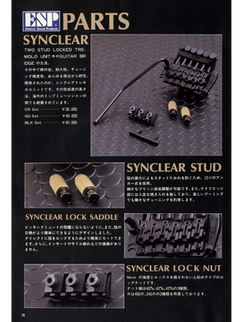



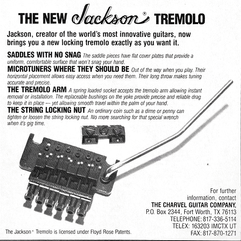



















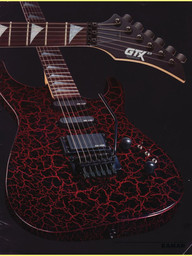

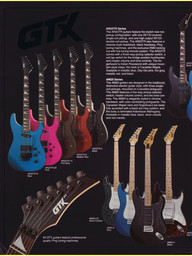







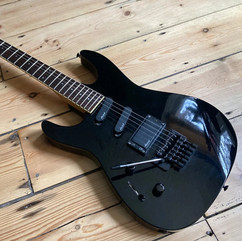





Comments